Treatment for tennis elbow pain. Tennis Elbow: Comprehensive Guide to Symptoms, Causes, and Effective Treatments
What are the common symptoms of tennis elbow. How is tennis elbow caused. What are the most effective treatments for tennis elbow. Can tennis elbow be prevented through exercises. When should you seek medical attention for tennis elbow.
Understanding Tennis Elbow: More Than Just a Sports Injury
Tennis elbow, medically known as lateral epicondylitis, is a condition that extends far beyond the tennis court. Despite its name, this painful ailment affects a wide range of individuals, from athletes to office workers, and can significantly impact daily activities.
Why is tennis elbow not exclusive to tennis players. The condition arises from repetitive arm movements that strain the forearm muscles, leading to tiny tears in the tendons connecting these muscles to the elbow. While tennis, particularly poor backhand technique, is a common culprit, numerous other activities can trigger this condition.
- Painting and decorating
- Household chores (vacuuming, sweeping, scrubbing)
- Manual labor (mechanical work, plumbing, carpentry)
- Other sports (golf, basketball, bowling)
- Food preparation (repetitive chopping and cutting)
- Extensive computer mouse use
As we age, our risk of developing tennis elbow increases, particularly if we engage in occupations or activities that place repeated stress on our arms. Understanding this broader context is crucial for early identification and prevention of the condition.

Recognizing the Telltale Signs of Tennis Elbow
Identifying tennis elbow early can be key to preventing its progression and minimizing its impact on daily life. But what exactly should you be looking out for?
The primary symptom of tennis elbow is a radiating pain that extends from the outer part of the elbow down to the forearm and wrist. This discomfort can make simple tasks like shaking hands or turning a doorknob surprisingly challenging. The pain may start gradually and worsen over time, especially if the causative activities continue.
Other symptoms to be aware of include:
- Weakness in the affected arm
- Stiffness in the elbow
- Difficulty in fully extending the arm
- Pain that worsens when gripping or lifting objects
- Discomfort that increases during or after activity
How can you differentiate tennis elbow from other arm conditions? Unlike conditions such as carpal tunnel syndrome, which primarily affects the wrist and hand, tennis elbow pain is centered around the outer part of the elbow. Additionally, the pain typically worsens with specific movements that engage the forearm muscles, rather than being constant.

The Science Behind Tennis Elbow: Understanding the Cause
To effectively treat and prevent tennis elbow, it’s crucial to understand its underlying causes. At its core, tennis elbow is an overuse injury, but what exactly happens within the arm to create this painful condition?
The primary cause of tennis elbow is repetitive stress on the extensor carpi radialis brevis (ECRB) muscle. This muscle, which helps stabilize the wrist when the elbow is straight, can develop small tears in its tendon where it attaches to the lateral epicondyle (the bony bump on the outer part of the elbow).
Why do these tears occur? When the ECRB muscle is overworked through repetitive contractions, it can become inflamed and develop small tears. Over time, this leads to degeneration and weakening of the tendon, resulting in pain and tenderness on the outside of the elbow.
Factors that can contribute to the development of tennis elbow include:
- Poor technique in sports or work activities
- Inadequate equipment (e.g., tennis racquet with strings that are too tight)
- Sudden increase in activity level or intensity
- Age-related degeneration of tendons
- Occupations requiring repetitive arm movements
Understanding these causes can help in developing effective prevention strategies and treatment plans tailored to individual circumstances.

Comprehensive Treatment Approaches for Tennis Elbow
When it comes to treating tennis elbow, a multi-faceted approach often yields the best results. From home remedies to medical interventions, there are numerous strategies to alleviate pain and promote healing.
Home Remedies: The First Line of Defense
What can you do at home to start addressing tennis elbow? The first and most crucial step is rest. Avoiding activities that exacerbate the pain allows the affected area to begin healing. Applying ice or a cold compress to the elbow for 15 minutes, up to four times a day, can help reduce inflammation and provide pain relief.
Medication: Over-the-Counter and Prescription Options
Non-steroidal anti-inflammatory drugs (NSAIDs) such as ibuprofen and naproxen can be effective in managing pain and reducing inflammation. For more severe cases, corticosteroid injections administered directly into the affected area may provide longer-lasting relief, though their use should be limited due to potential side effects.
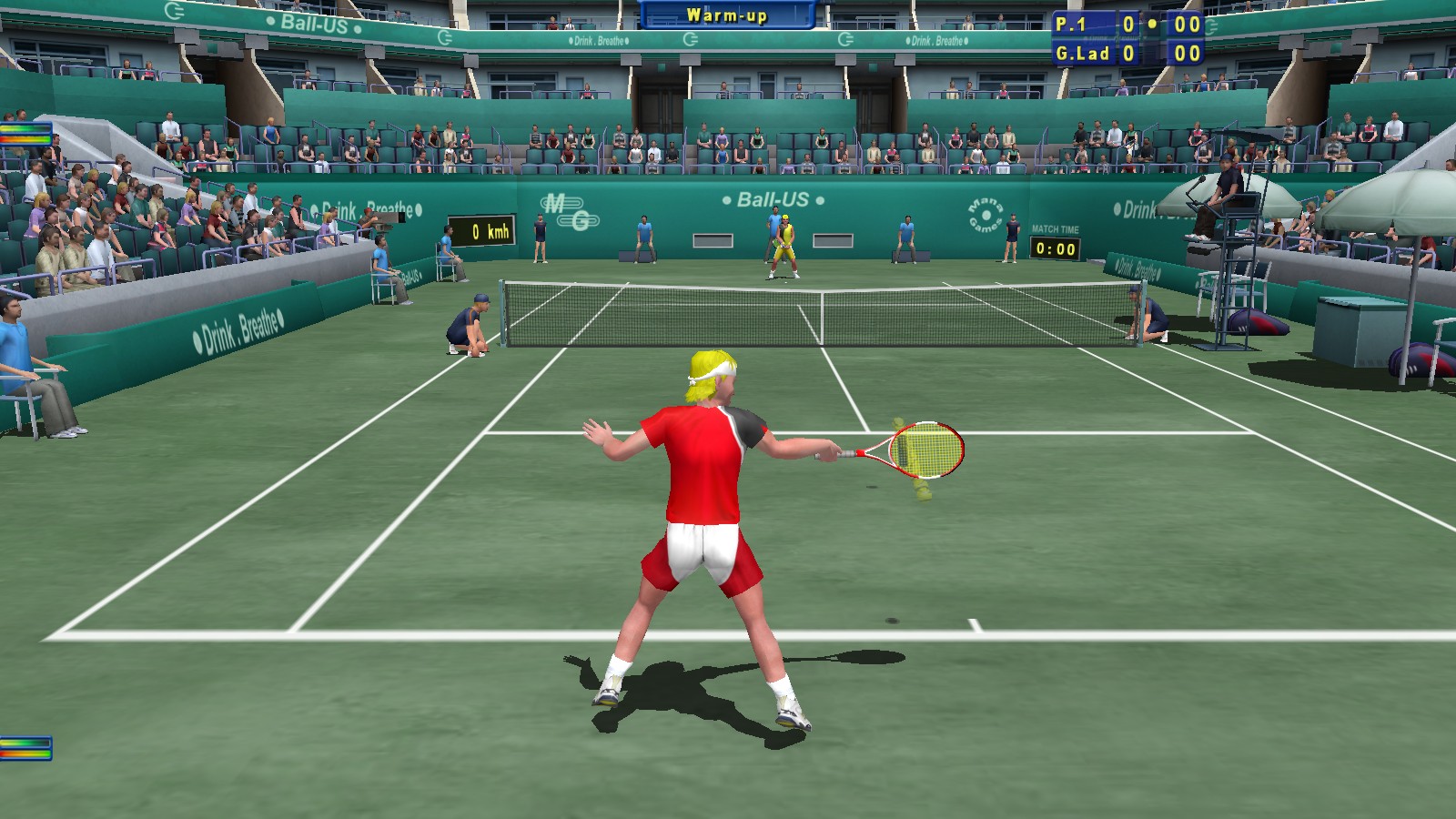
Physical Therapy and Support
How can physical therapy aid in recovery from tennis elbow? A skilled therapist can guide you through exercises to improve muscle strength, flexibility, coordination, and endurance. These exercises not only aid in recovery but also help prevent future recurrences.
Additionally, support devices such as forearm straps, bands, or splints can provide relief and promote healing by reducing stress on the affected tendons.
Advanced Treatment Options
For cases that don’t respond to conservative treatments, several advanced options are available:
- Platelet-Rich Plasma (PRP) Therapy: This involves injecting the patient’s own concentrated platelets into the affected area to boost healing.
- Ultrasonic Tenotomy: Also known as the TENEX procedure, this minimally invasive technique uses ultrasound guidance to remove damaged tendon tissue.
- Arthroscopic Surgery: In persistent cases, this minimally invasive surgical procedure may be necessary to repair damage in the elbow.
Each of these treatments has its own benefits and considerations, and the choice depends on the severity of the condition and individual patient factors.

Preventive Measures and Exercises for Tennis Elbow
Prevention is always better than cure, and this holds true for tennis elbow as well. By incorporating specific exercises and preventive strategies into your routine, you can significantly reduce your risk of developing or re-aggravating tennis elbow.
Strengthening Exercises
What exercises can help prevent tennis elbow? Here are some effective options:
- Wrist Flexor Stretch: Extend your arm with your palm up, then use your other hand to gently bend your wrist back.
- Wrist Extensor Stretch: Similar to the flexor stretch, but with your palm facing down.
- Fist Clench: Slowly clench your fist, hold for a few seconds, then release.
- Towel Twist: Hold a towel with both hands and twist it as if you’re wringing out water.
- Rubber Band Extension: Place a rubber band around your fingers and slowly spread them against the resistance.
Perform these exercises regularly, but stop if you experience pain. It’s crucial to start slowly and gradually increase intensity and repetitions as your strength improves.
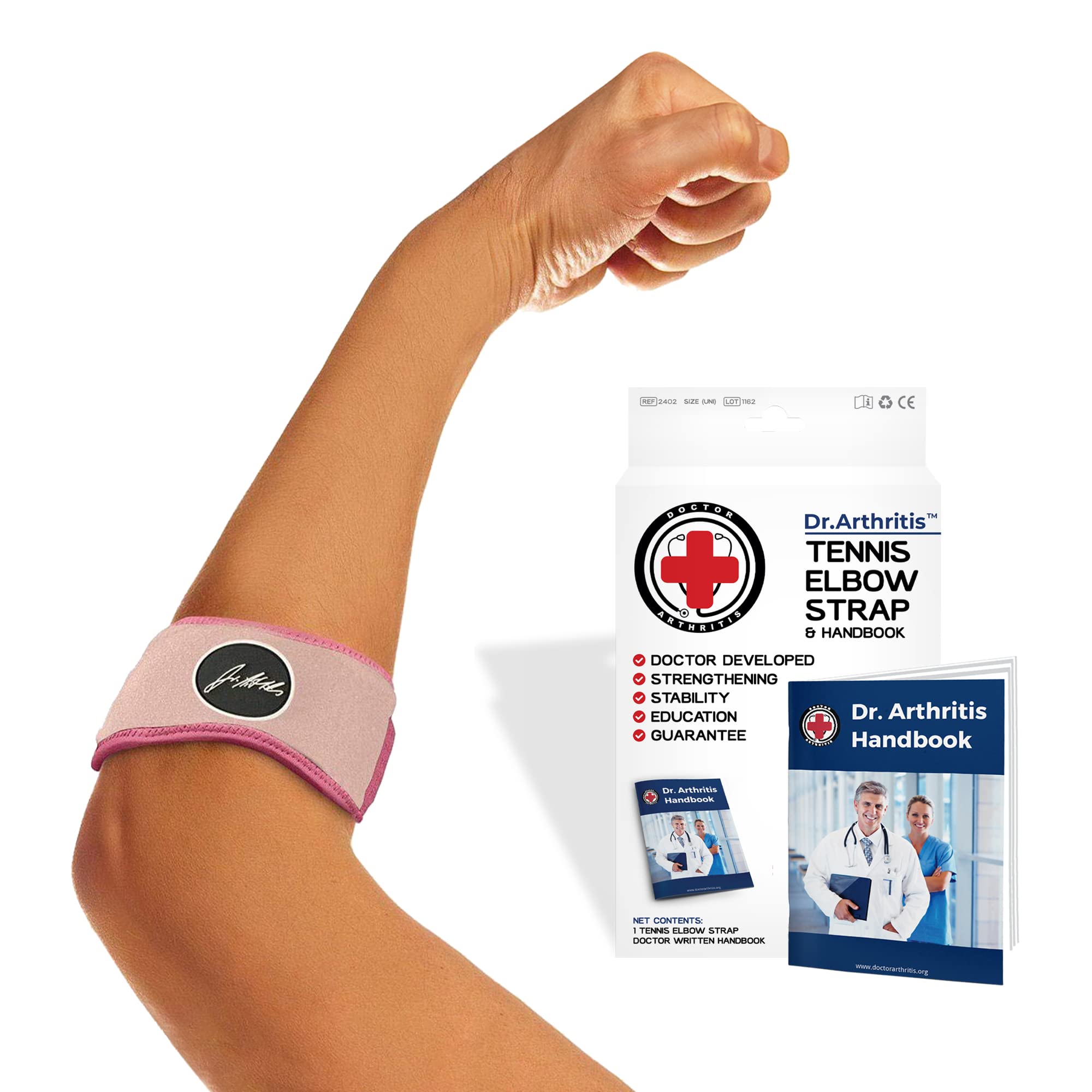
Preventive Strategies
Beyond exercises, there are several strategies you can employ to reduce your risk of tennis elbow:
- Use proper technique in sports and work activities
- Ensure your equipment is appropriate (e.g., correct tennis racquet grip size)
- Take regular breaks during repetitive activities
- Gradually increase the intensity and duration of activities
- Maintain overall arm and shoulder strength
- Practice good posture, especially when working at a computer
By incorporating these preventive measures into your daily routine, you can significantly reduce your risk of developing tennis elbow or experiencing a recurrence.
When to Seek Medical Attention for Tennis Elbow
While many cases of tennis elbow can be managed at home, there are situations where professional medical advice becomes necessary. But how do you know when it’s time to consult a doctor?
Consider seeking medical attention if:
- Pain persists despite rest and home treatment for several weeks
- The pain is severe and interferes significantly with daily activities
- You experience numbness or tingling in your arm or hand
- You have difficulty moving your elbow or arm
- You notice swelling or redness around the elbow joint
- The pain spreads to other areas of your arm or shoulder
What can you expect during a medical consultation for tennis elbow? Your doctor will likely perform a physical examination, asking you to move your arm in various ways to assess pain and stiffness. They may also apply pressure to specific areas around your elbow to pinpoint the exact location of pain.
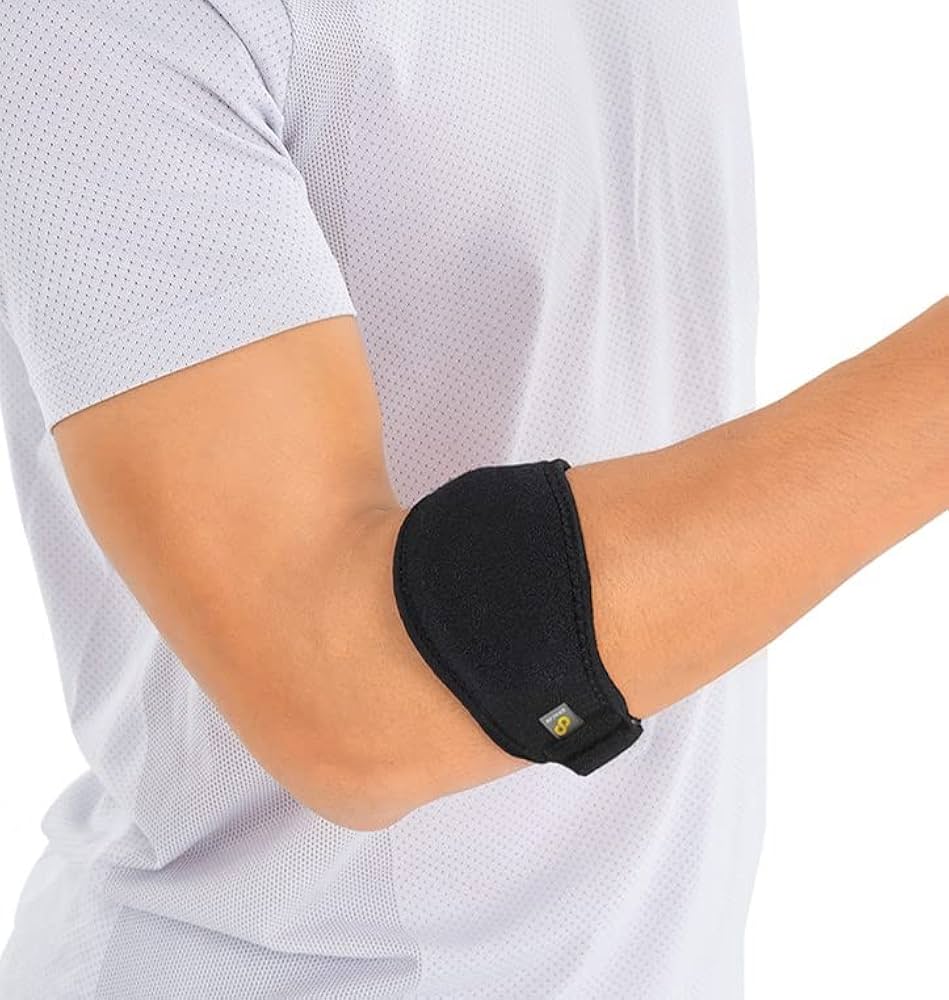
In some cases, additional diagnostic tests may be necessary:
- X-rays to rule out other conditions like arthritis or fractures
- MRI scans to get a detailed view of the soft tissues around your elbow
- Electromyography (EMG) to check for nerve compression
Based on these assessments, your doctor can provide a tailored treatment plan that may include a combination of the approaches discussed earlier.
Long-Term Management and Living with Tennis Elbow
For some individuals, tennis elbow can become a chronic condition requiring ongoing management. How can you effectively cope with tennis elbow in the long term?
Long-term management strategies may include:
- Regular exercise and stretching routines
- Ergonomic adjustments at work and home
- Use of supportive devices during activities
- Periodic check-ins with a physical therapist or occupational therapist
- Stress management techniques to reduce overall tension in the body
It’s important to remember that recovery from tennis elbow can be a gradual process. Patience and consistency in following your treatment plan are key to achieving the best possible outcome.
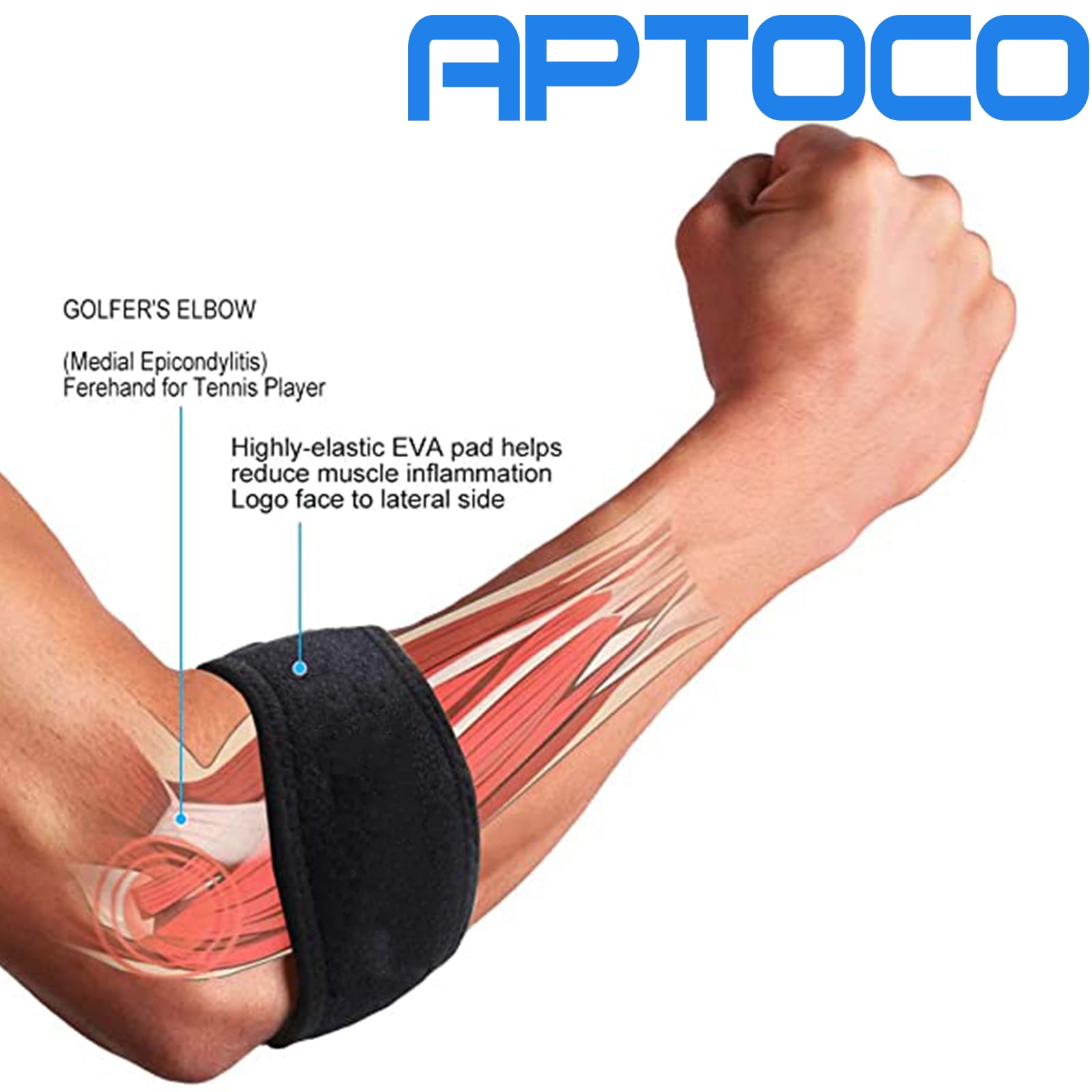
How can you modify your lifestyle to accommodate tennis elbow? Consider the following adjustments:
- Use your unaffected arm for tasks when possible
- Break up repetitive tasks into shorter sessions with rest periods
- Explore alternative techniques or tools for activities that aggravate your condition
- Communicate with your employer about potential workplace modifications
- Stay active in ways that don’t exacerbate your symptoms
By adopting these strategies and working closely with healthcare professionals, many individuals with tennis elbow can effectively manage their condition and maintain a high quality of life.
Treatments for Tennis Elbow | The Bone & Joint Center
in Orthopedics, Sports Medicine
March 27, 2020
Do you find it challenging to perform daily activities because you can’t move your arms without discomfort? If you answered yes, you may have tennis elbow. Despite the name, this painful condition affects not only tennis players, but also other athletes, plumbers, painters, carpenters, and even students.
What Causes Tennis Elbow?
Tennis elbow is often caused by poor and excessive use of the backhand stroke in tennis. The repeated actions cause stress to the forearm muscles, resulting in tiny tears in the tendons that attach these muscles to your elbow. Although named after tennis and often associated with it, other repetitive arm movements can also increase your risk of developing this injury. They include:
- Painting
- Vacuuming, sweeping, and scrubbing
- Doing mechanical, plumbing, or carpentry work
- Golfing
- Playing basketball
- Bowling
- Cutting cooking ingredients
- Repetitive use of a computer mouse
Your risk for tennis elbow increases as you get older and if you participate in activities or have an occupation that strains your arms.
Treatments for Tennis Elbow
Tennis elbow causes radiating pain from your elbow to your forearm or wrist, making it difficult to perform simple tasks like shaking hands or turning a doorknob. It is always best to address the pain before it begins to significantly affect your daily activities. The treatment options available for this condition are:
Home Remedies
The first step of treatment for tennis elbow is rest. Avoid strenuous activities that require you to move the affected arm too much. You can also apply ice or a cold compress on the troubled area for 15 minutes up to 4 times a day.
Medication
- Over-the-counter pain relievers. You may take non-steroidal anti-inflammatory drugs or NSAIDs while you are resting your elbow. These include ibuprofen and naproxen, among others.
- If rest and over-the-counter pain medications do not work, you may consult with your doctor about taking corticosteroids.
 This is given through injections administered directly into the affected area. Results can last several weeks or months, depending on the severity of your condition.
This is given through injections administered directly into the affected area. Results can last several weeks or months, depending on the severity of your condition.
Physical Therapy and Support
If rest, ice therapy, and medications do not work to relieve your tennis elbow pain, your doctor may recommend physical therapy. Your therapist will teach you how to improve your muscle strength, flexibility, coordination, and endurance.
Aside from therapy, you may also be given a forearm strap, bands, or splints. These can help support your arm, relieve symptoms, and promote healing.
Other Procedures
If these measures do not relieve your elbow pain, your doctor may consider the following treatments:
- Platelet-Rich Plasma Therapy. Another treatment option for your tennis elbow is injecting platelet-rich plasma into the affected area to boost healing. There is no risk that your body will reject the plasma used in platelet-rich plasma therapy as it will come from your own blood.

- Ultrasonic tenotomy. Also known as a TENEX procedure, ultrasonic tenotomy is performed with the help of ultrasound guidance. Your doctor will insert a needle through the skin in the affected area and into the damaged tendon. Ultrasonic energy will send fast vibrations through the needle, liquifying the damaged tissue. Once liquefied, these tissues will be suctioned out.
- If your tennis elbow does not improve after 6 to 12 months of noninvasive treatments, surgery may be necessary. Arthroscopy is a minimally invasive procedure used to fix damage in the elbow. As it requires smaller incisions than traditional surgery, the recovery period will be short, and there will be minimal pain and scarring involved.
Tennis Elbow Treatment in North Dakota
Don’t let your elbow pain stop you from doing the things you want. Let our board-certified orthopedic surgeons help you find relief. The Bone & Joint Center has 11 offices across North Dakota that are ready to assist you with your orthopedic needs.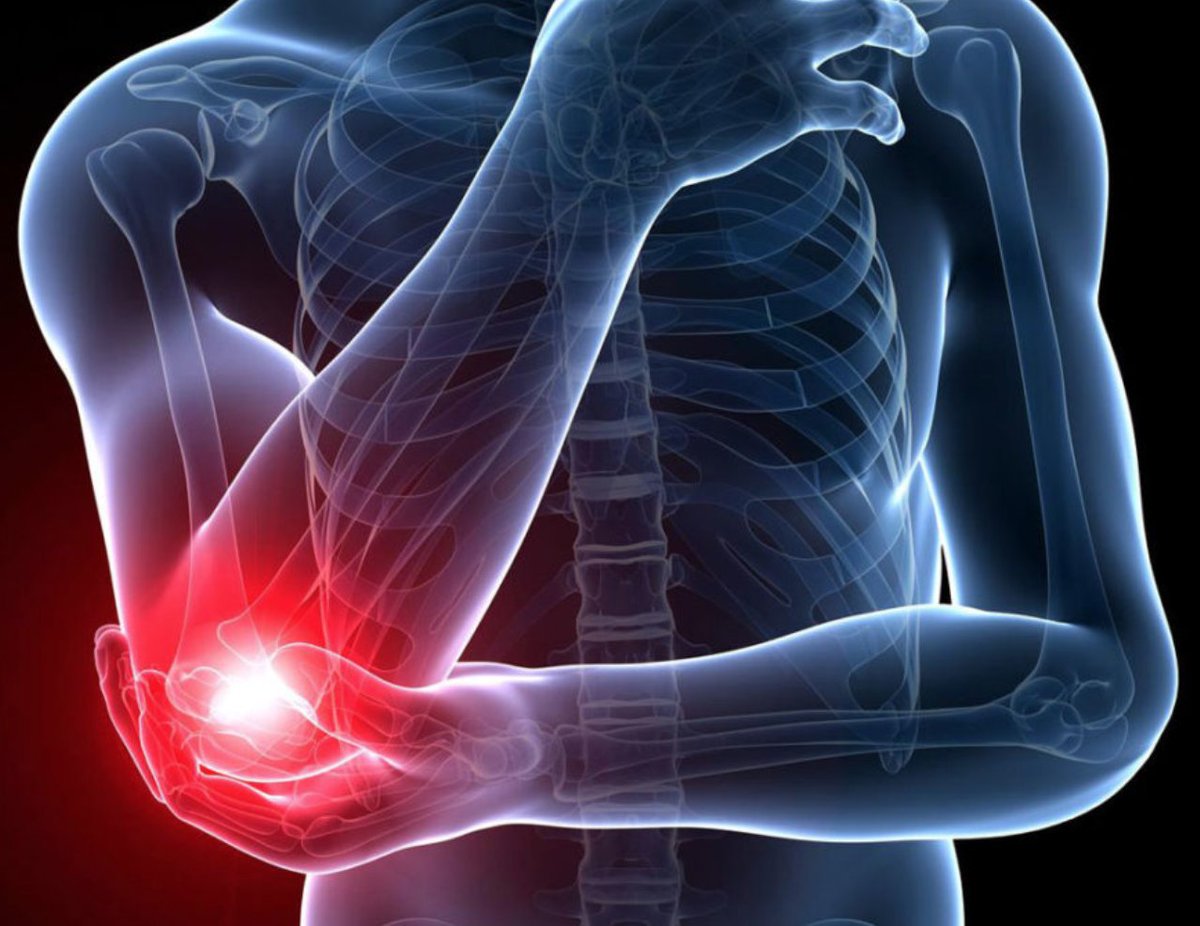
To schedule an appointment, call us at (701) 946-7400 or (866) 900-8650. You may also request an appointment online.
8 exercises for easing tennis elbow plus prevention tips
Tennis elbow is also known as lateral epicondylitis. It occurs when a person strains the tendons in their forearm. People can usually treat tennis elbow at home with rest and over-the-counter medication. Doing specific exercises can also help ease the pain and prevent reoccurrence.
We describe eight exercises to help strengthen muscles in the forearm and prevent tennis elbow from coming back. We also cover causes and symptoms, home treatment, prevention, and when to see a doctor.
Before trying these exercises, wait for any swelling to go down. It is also a good idea to check with a doctor or a physical or occupational therapist first.
The following exercises can help rehabilitate tennis elbow:
1. Wrist turn
To perform a wrist turn:
- bend the elbow at a right angle
- extend the hand outwards, palm facing up
- twist the wrist around gradually, until the palm is facing down
- hold the position for 5 seconds
- repeat nine more times
- do two more sets of 10 repetitions
2.
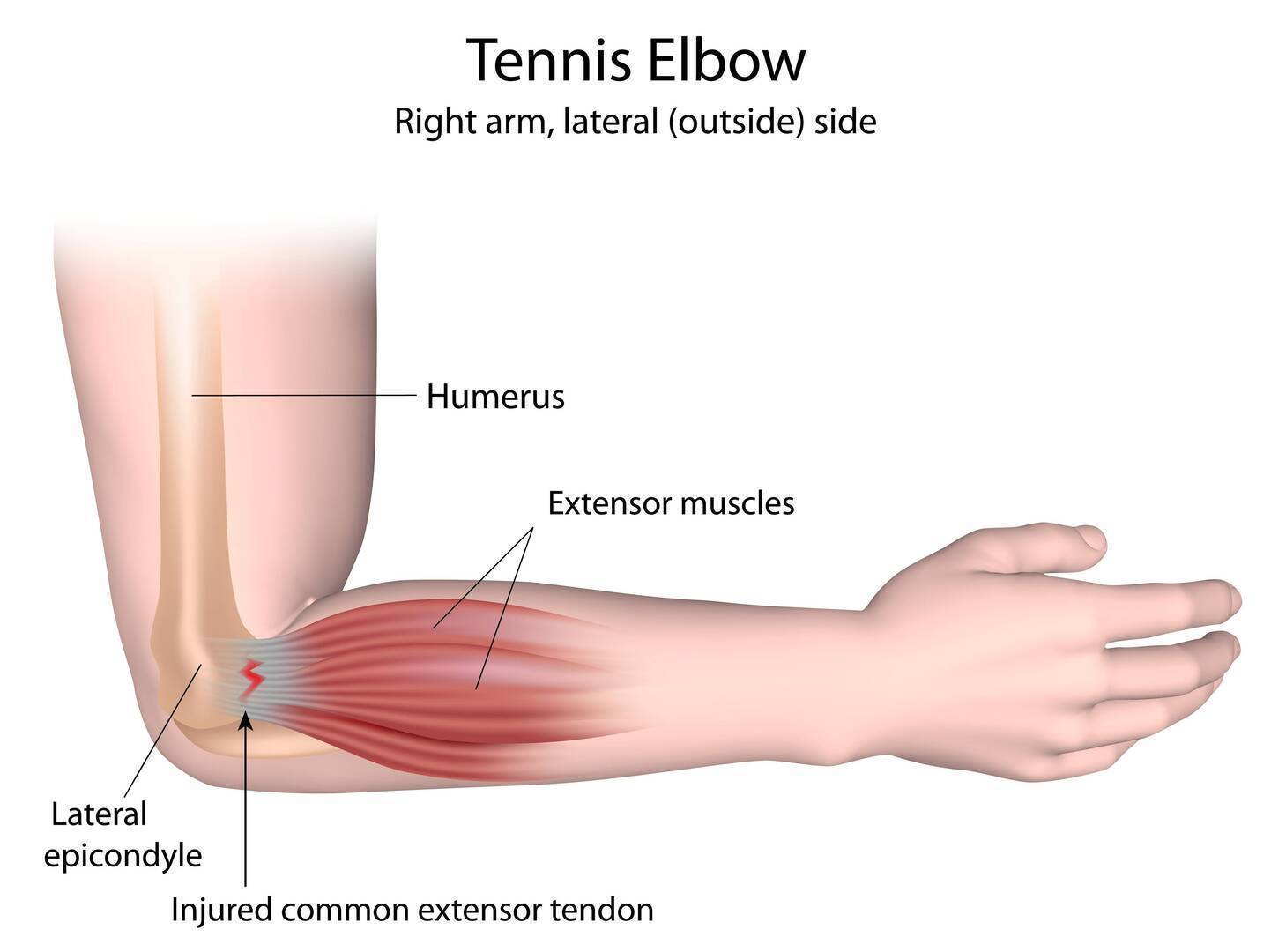 Wrist turn with weight
Wrist turn with weight
The wrist turn with weight is the same as the wrist turn above. But, in this version, the person also grips a light weight, such as a small dumbbell or a tin of food.
3. Wrist lift, palm up
To perform a wrist lift, palm up:
- grip a light weight, such as a small dumbbell or a tin of food
- bend the elbow at a right angle
- extend the hand outwards, palm facing up
- bend the wrist up towards the body
- hold this position for 5 seconds, then release slowly
- repeat nine more times
- do two more sets of 10 repetitions
4. Elbow bend
To perform the elbow bend:
- stand straight
- lower the arm to one side
- slowly bend the arm upwards until the hand touches the shoulder
- hold this position for 15 to 30 seconds
- repeat nine more times
5. Wrist extensor stretch
To perform the wrist extensor stretch:
- raise the arm straight out in front of the body
- with the palm facing down, slowly bend the wrist downwards
- using the other hand, gently pull the stretching hand back towards the body
- hold this position for 15 to 30 seconds
- straighten the wrist again
- repeat twice
- do two more sets of 3 repetitions
6.
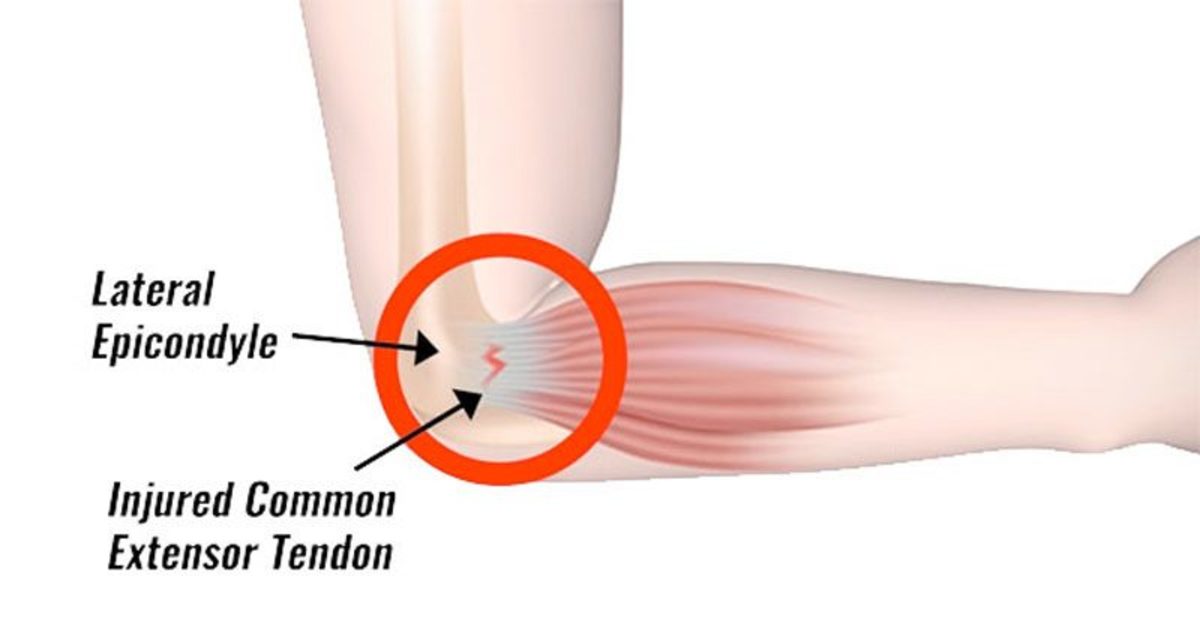 Wrist extensor flex
Wrist extensor flex
To perform the wrist extensor flex:
- raise the arm straight out in front of the body
- with the palm facing down, slowly bend the wrist upwards
- using the other hand, gently pull the fingers back towards the body
- hold this position for 15 to 30 seconds
- straighten the wrist again
- repeat twice
- do two more sets of 3 repetitions
7. Fist squeeze
To perform the fist squeeze:
- use a rolled-up towel, sock, or tennis ball and place in the palm
- grip the ball or towel with the fingers to form a fist
- squeeze tightly for 10 seconds
- repeat nine more times
8. Towel twist
To perform the towel twist:
- hold a loosely rolled-up towel lengthways, with one hand at each end
- keep the shoulders relaxed
- twist the towel by moving the hands in opposite directions, as if wringing out water
- repeat nine more times
- then repeat ten more times twisting the towel in the reverse direction
People call this condition tennis elbow because it strains the muscles and tendons that a person uses to grip a tennis racket. However, most cases of tennis elbow are not due to playing tennis or any other sport. Any activity that involves a gripping and twisting motion can cause this strain.
However, most cases of tennis elbow are not due to playing tennis or any other sport. Any activity that involves a gripping and twisting motion can cause this strain.
Tennis elbow usually occurs because of repetitive activity. Carpenters, painters, and plumbers are particularly susceptible.
Symptoms of tennis elbow vary from person to person and range from mild to severe. Typical symptoms include pain in the arm and tenderness around the elbow.
A person may notice swelling and a burning sensation around the elbow. They may find that their grip becomes weaker and may also feel pain further down the arm.
Continuation of the repetitive activity causing the strain can make it worse.
People with tennis elbow do not typically need to see a doctor. By stopping the repetitive activity and resting the arm, the pain usually eases within 2 weeks.
A person can treat tennis elbow at home by:
- taking over-the-counter (OTC) painkillers, such as ibuprofen or another non-steroidal anti-inflammatory drug (NSAID)
- using an ice pack, heat pack, or hot water bottle on the affected area to soothe the pain
- learning how to protect the joints to avoid reoccurrence
Ceasing or reducing repetitive activities and resting the arm can aid recovery.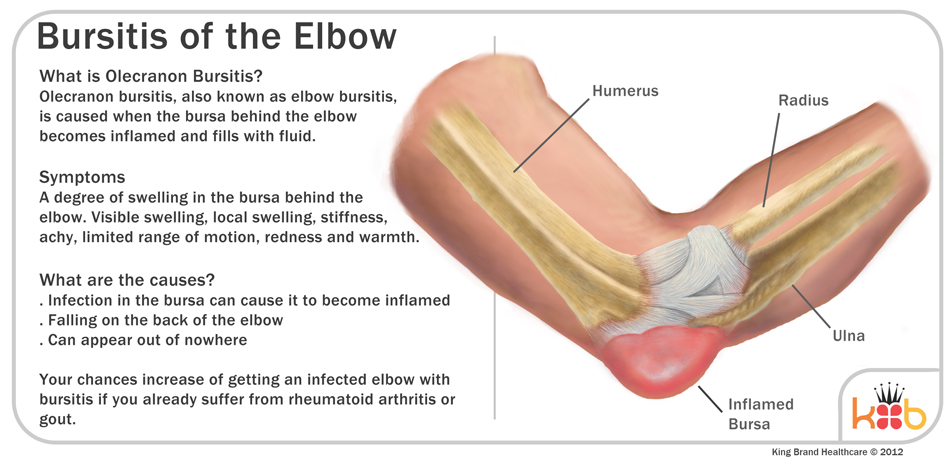 When resting is not possible, adjusting arm movements can help to ease symptoms. For example, a person can try keeping their palms flat and elbows bent when lifting.
When resting is not possible, adjusting arm movements can help to ease symptoms. For example, a person can try keeping their palms flat and elbows bent when lifting.
Doing exercises designed for tennis elbow helps strengthen forearm muscles and improve function. People whose jobs involve a repetitive movement of the forearm should do these exercises to prevent tennis elbow returning.
Always consult a doctor before attempting exercises for tennis elbow. A doctor can make sure that the exercises will not affect any underlying conditions or injuries.
If exercising the forearms seems to worsen symptoms of tennis elbow, a person can try:
- resting the arm for longer
- using an ice pack on the arm to help reduce inflammation
- taking OTC medication, such as ibuprofen, for the relief of pain and inflammation
- speaking to a doctor or physical therapist to make sure they are doing the exercises properly
Most people can treat the pain and inflammation caused by tennis elbow with rest and OTC medication. If the pain is severe or does not go away within 2 weeks, a person should see a doctor.
If the pain is severe or does not go away within 2 weeks, a person should see a doctor.
A doctor may prescribe a different NSAID or a steroid injection. Most people only need one injection, though they may need to rest their elbow for around 2–3 weeks afterward. Pain can worsen after a steroid injection, but this should improve within 48 hours.
Some people may find that tennis elbow is affecting their day-to-day activities. In these cases, a doctor may recommend physical or occupational therapy. A specialist can provide treatments and exercises to help improve motion and reduce pain.
A doctor or therapist may also recommend a supportive brace or clasp. This can help reduce strain on the elbow if repetitive movements are necessary for a person’s work.
Lateral Epicondylitis (Tennis Elbow) | Johns Hopkins Medicine
What is tennis elbow?
Lateral epicondylitis, commonly known as tennis elbow, is swelling of the tendons that bend your wrist backward away from your palm.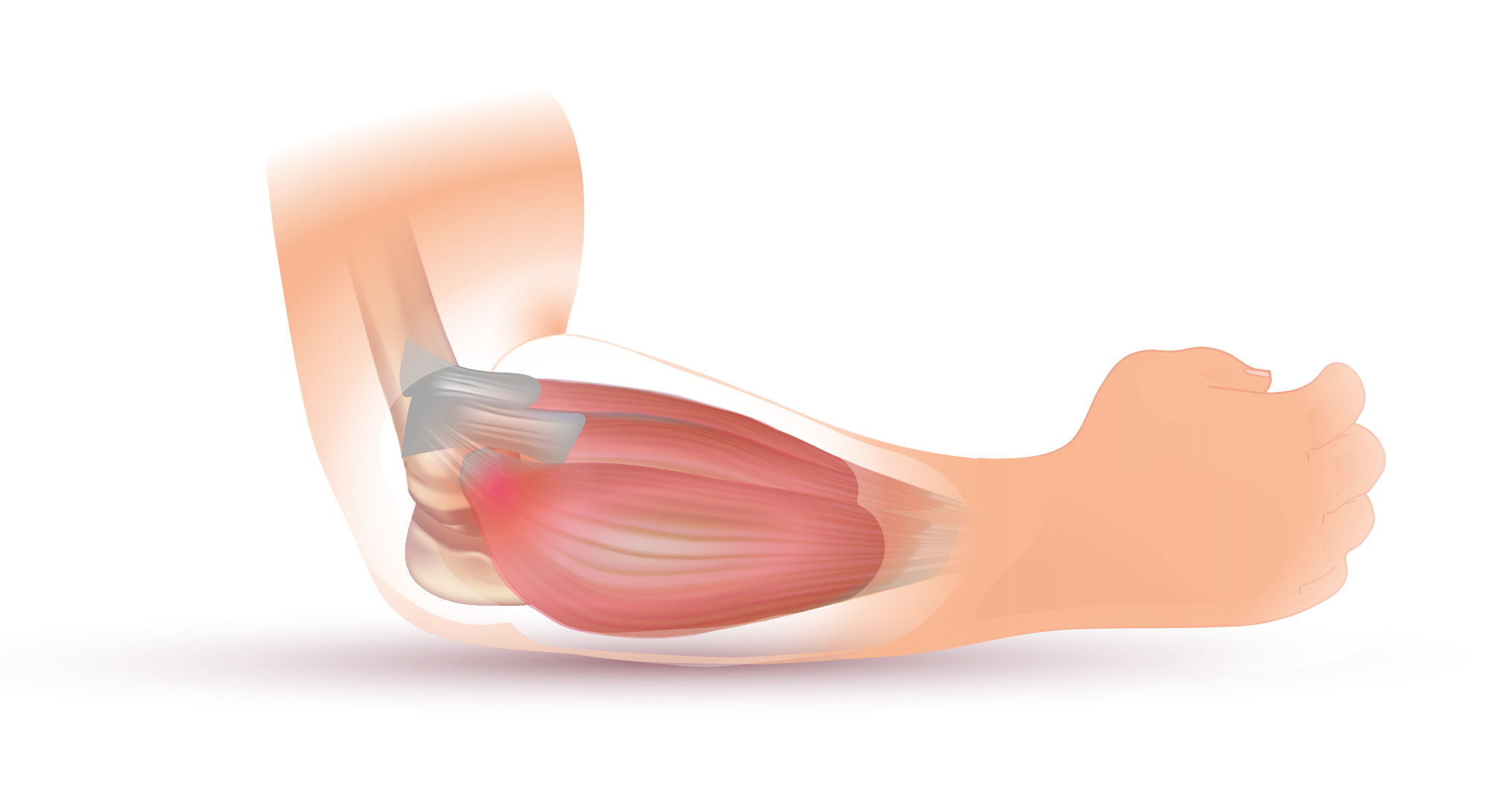
A tendon is a tough cord of tissue that connects muscles to bones. The tendon most likely involved in tennis elbow is called the extensor carpi radialis brevis. Tennis elbow is usually diagnosed in both men and women between the ages of 30 and 50 years.
What causes tennis elbow?
Tennis elbow, as the name implies, is often caused by the force of the tennis racket hitting balls in the backhand position. Your forearm muscles, which attach to the outside of your elbow, may become sore from excessive strain. When making a backhand stroke in tennis, the tendons that roll over the end of our elbow can become damaged. Tennis elbow may be caused by:
Improper backhand stroke
Weak shoulder and wrist muscles
Using a tennis racket that is too tightly strung or too short
Other racquet sports, like racquetball or squash
Hitting the ball off center on the racket, or hitting heavy, wet balls
However, many people who suffer from tennis elbow do not play tennis.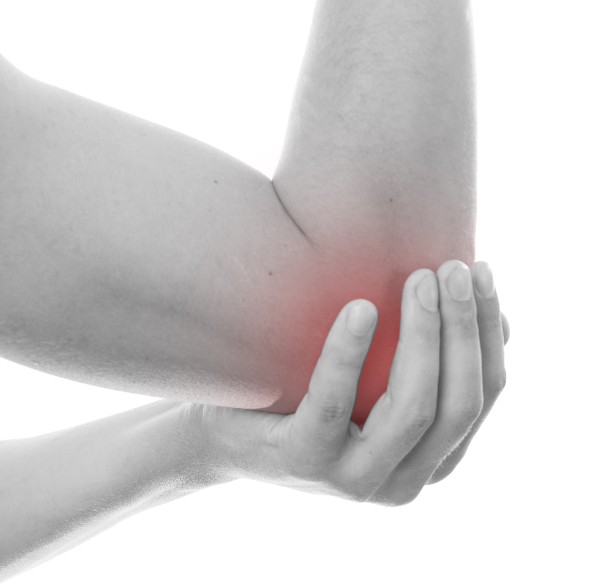 The problem can be caused by any repetitive movement. Other causes of tennis elbow include:
The problem can be caused by any repetitive movement. Other causes of tennis elbow include:
Painting with a brush or roller
Operating a chain saw
Frequent use of other hand tools on a regular basis
Using repeated hand motions in various professions, such as meat cutters, musicians, dentists, and carpenters
What are the symptoms of tennis elbow?
The following are the most common symptoms of tennis elbow. However, you may experience symptoms differently.
At first, you may have pain, burning, or an ache along the outside of your forearm and elbow. With time, the pain gets worse. If you continue the activity that caused your condition, the pain may spread down to your wrist, even at rest. Pain may also persist when you place your arm and hand palm-down on a table, and then try to raise your hand against resistance. You may also feel pain when you try to lift and grip small objects, such as a coffee cup. A weak grip is another symptom of tennis elbow.
A weak grip is another symptom of tennis elbow.
The symptoms of tennis elbow may resemble other medical problems or conditions. Always see your healthcare provider for a diagnosis.
How is tennis elbow diagnosed?
Your healthcare provider can usually diagnosis your tennis elbow by a physical exam. In some cases, you may certain tests, such as:
An X-ray to look at the bones of your elbow to see if you have arthritis in your elbow.
Magnetic resonance imaging (MRI) can show your tendons and how severe the damage is. An MRI of your neck can show if arthritis in your neck, or disk problems in your spine are causing your arm pain.
Electromyography (EMG) of your elbow may show if you have any nerve problems that may be causing your pain.
How is tennis elbow treated?
It’s important to avoid the movement that caused your injury in the first place. Treatment may include:
Rest and stopping the activity that produces the symptoms
Ice packs (to reduce inflammation)
Strengthening and stretching exercises
Anti-inflammatory medicines (such as ibuprofen or naproxen)
If these treatments do not work, your healthcare provider may talk to you about:
Bracing the area to keep it still for a few weeks or use of a special brace with activities
Steroid injections to help reduce swelling and pain
A special type of ultrasound that can help break up scar tissue, increase blood flow, and promote healing
Surgery (rarely necessary)
What can I do to prevent tennis elbow?
Keep your arms flexible and strong
Avoid repetitive movements
Warm up before exercising or using your arms for sports or other repetitive movements
If you play a racquet sport, make sure your equipment is right for you
When should I call my healthcare provider?
If pain or trouble moving affects your regular daily activities
If your pain doesn’t get better, or it gets worse with treatment
You see a bulge or lump on your arm
Key points about lateral epicondylitis
Lateral epicondylitis, or tennis elbow, is swelling or tearing of the tendons that bend your wrist backward away from your palm.

It’s caused by repetitive motion of the forearm muscles, which attach to the outside of your elbow. The muscles and tendons become sore from excessive strain.
Symptoms include pain, burning, or an ache along the outside of the forearm and elbow. It gets worse and may spread down to the wrist if the person continues the activity that causes the condition. The grip may become weak.
Lateral epicondylitis is diagnosed by an exam of the elbow joint. The healthcare provider may need an X-ray or MRI to see what’s causing the problem. An EMG may be done to look for nerve problems.
Lateral epicondylitis can be treated with rest and medicines to help with the inflammation. Exercises often help too. Rarely, surgery may be done to repair the tendon.
You can help prevent lateral epicondylitis by doing things like warming up before exercise or sports, increasing activity slowly, using the right equipment for activities, and strengthening your arm muscles.

Follow your healthcare provider’s recommendations to get rest and manage pain and swelling. Let your healthcare provider know if these strategies don’t help reduce pain, swelling, and loss of function.
How to Stop a Painful Elbow From Messing With Your Life – Health Essentials from Cleveland Clinic
Do you have pain on the outside of your elbow that won’t seem to go away? If so, you could have tennis elbow — even if you’ve never swung a racket. And, if you’ve been bothered by it for more than a month or so, it’s a good idea to get it checked.
Cleveland Clinic is a non-profit academic medical center. Advertising on our site helps support our mission. We do not endorse non-Cleveland Clinic products or services. Policy
Most people with tennis elbow don’t require surgery. But if you do, you might be a candidate for a surprisingly quick outpatient procedure that can dramatically reduce your recovery time.
Who gets tennis elbow?
Known medically as lateral epicondylitis, tennis elbow can affect construction workers, manual laborers, meat cutters and even supermarket cashiers, usually between ages of 40 and 60. As many as 10 million Americans may suffer from this condition.
Many repetitive tasks using the hand, wrist and arm can cause the pain and inflammation of tennis elbow. Movements like gripping and twisting overwork the tendon that attaches your forearm muscles to the bony protrusion on the outside of your elbow.
When should you have it checked?
Patients typically show up at the doctor after two or three months of elbow pain, according to sports medicine physician Dominic King, DO. But sooner is better. He and sports medicine physician, Jason Genin, DO, see multiple patients daily for this painful condition.
The longer your elbow pain persists, the more likely the tendon may continue to stay inflamed and may even begin to degenerate.

The body sometimes tries to heal the damage in a way that becomes uncontrolled and erratic. Dr. King says that parts of the tissue start to take on a hard, knotted consistency, known as tendinosis.
“Tendinosis is like having a ball of mucous stuck in your tendon,” he says, adding that tendinosis doens’t seem to go away on its own over time.
What are first steps to treat tennis elbow?
If it’s your first time with tennis elbow, your doctor likely will recommend these conservative treatments:
- Rest the elbow.
- Use a tennis elbow strap.
- Use anti-inflammatory drugs (pills or topical ointment).
- Do physical therapy to stretch and strengthen the forearm.
If conservative treatments don’t help, there are still options to stimulate a normal healing process. Your doctor likely will order musculoskeletal ultrasound imaging to see precisely where the problem is.
“If someone comes to me saying, ‘This has been going on for six months,’ or, ‘Over the last three years, I’ve had this four times,’ we’re a little more keen to get an ultrasound earlier,” says Dr. King. “Something is wrong with the tendon that keeps making the pain come back.”
King. “Something is wrong with the tendon that keeps making the pain come back.”
The imaging allows your doctor to examine the exact characteristics of the tendon, and what areas are degenerative. Corticosteroid injections or platelet rich plasma injections may be used to help control inflammation. However, the use of these injections can be unreliable.
If there’s still no improvement after a conservative approach and injection therapies, you may need surgery, Dr. King says.
In a typical operation, the surgeon exposes the tendon, removes the damaged area and makes repairs. Three to six months of recovery are usually required before you can resume normal activities.
How does less invasive surgery work?
A minimally invasive option is available for some patients. It uses an FDA-approved technology in a procedure called minimally invasive tenotomy.
A needle device uses a stream of normal saline to create a gentle suction. It then removes the damaged, thickened mucous-like tendinosis.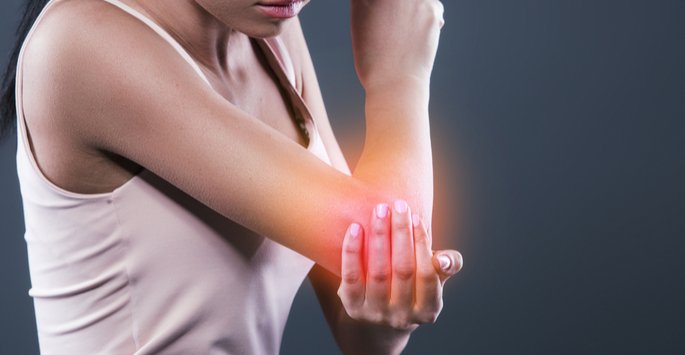 It leaves the soft, pliable normal tendon unaffected.
It leaves the soft, pliable normal tendon unaffected.
Here’s what to expect:
- Your doctor injects a local anesthetic to numb the skin and damaged tendon.
- He or she makes a small puncture through the skin — about the size of the pointer arrow on your computer screen.
- Only one or two minutes of the 20-minute procedure involves the vibrating probe.
- With the local anesthetic, you’ll feel a slight pressure during the procedure.
The small skin puncture doesn’t require stitches, and you can return to normal activities in four to six weeks, Dr. King says. Full recovery takes around three months.
He stresses that treatment and surgery decisions depend on your history of pain, how serious the tendon damage is and whether your occupation requires excessive use of the wrist and forearm.
Sometimes the damage is so severe that open surgery is the only option.
“Tennis elbow can be painful,” he says. “Treatment does not always involve injections or surgery. But if it does, a minimally invasive approach can be a reasonable approach.”
But if it does, a minimally invasive approach can be a reasonable approach.”
Treatments for Tennis Elbow | Orthopaedic Associates of Central Maryland
Lateral epicondylitis, or tennis elbow, occurs mainly in the tendons of the forearm muscles which are attached to the outside of the elbow. It is an overuse injury that is caused by repeated elbow and wrist motions. The condition is characterized by pain on the outer side of the elbow, forearm, and wrist, and it often gets worse when you use them with force or squeeze things.
Although tennis elbow can heal on its own, it can last for several weeks to months. Below are some of the recommended treatment options to help relieve its symptoms and get you on the road to a complete recovery as quickly as possible:
Home Remedies for Tennis Elbow
A few of the best home remedies for treating pain caused by tennis elbow include the following:
Rest
To relieve your elbow pain, you need to relax and rest the affected area. You must also refrain from doing activities that may aggravate your symptoms, like playing racquet sports.
You must also refrain from doing activities that may aggravate your symptoms, like playing racquet sports.
Ice
In addition to resting the area, you may also apply ice treatment or a cold pack on the affected area. Do this for 15 minutes, three to four times a day. Remember to first wrap the ice or cold pack with a towel to avoid ice burn on your skin.
NSAIDs
Nonsteroidal anti-inflammatory drugs (NSAIDs) are over-the-counter medications that you can take to reduce inflammation and relieve pain in your elbow and arm. Some examples are ibuprofen and naproxen.
Activity Modification
You can avoid tennis elbow pain and prevent it from recurring by improving your technique when doing activities that require elbow movement. For example, learning proper elbow and wrist motions when playing racquet sports can help prevent tendon injury and degeneration. Make sure that you are also using the proper equipment and warming up before any physical activity.
Physical Therapy for Tennis Elbow
Your doctor may also refer you to a physical therapist to learn proper exercises to stretch and strengthen your forearm muscles. Doing exercises with light weights, which involve lowering the elbow or wrist slowly from a raised position, can improve your muscle strength.
Medical Procedures
If the treatment measures above are not enough, your doctor may prescribe and perform the following:
PRP Therapy
Platelet-rich plasma therapy is a minimally invasive procedure used to treat tennis elbow and other types of joint pain. This method is generally safe with minimal side effects, since your own blood platelets are used in the process.
A blood sample is first taken from your arm, and the blood is then processed in a centrifuge. The platelets are separated out and collected, and your doctor then injects the platelet-rich plasma directly into the affected elbow to help repair the injured tendons.
Surgery
If the elbow pain continues and worsens even after 6 to 12 months of conservative treatment, your doctor may recommend surgery to repair the injured tendons and other tissue. After this procedure, you will undergo physical therapy to improve your recovery so your elbow is as good as new.
Tennis Elbow Treatment in Central Maryland
Our board-certified doctors at the Orthopaedic Associates of Central Maryland are experts at diagnosing and treating shoulder and elbow problems. We have several orthopedic clinics located across Central Maryland for your convenience.
If you have any questions or would like to schedule an appointment, call us today at (410) 644-1880 or (855) 4MD-BONE (463-2663). You may also fill out our online form now. We look forward to helping you get back to the game!
Treatment of Lateral Epicondylitis – American Family Physician
1. Allander E.
Prevalence, incidence, and remission rates of some common rheumatic diseases or syndromes. Scand J Rheumatol.
Scand J Rheumatol.
1974;3:145–53….
2. Hudak PL,
Cole DC,
Haines AT.
Understanding prognosis to improve rehabilitation: the example of lateral elbow pain. Arch Phys Med Rehabil.
1996;77:586–93.
3. Wilson JJ,
Best TM.
Common overuse tendon problems: a review and recommendations for treatment. Am Fam Physician.
2005;72:811–8.
4. Chumbley EM,
O’Connor FG,
Nirschl RP.
Evaluation of overuse elbow injuries. Am Fam Physician.
2000;61:691–700.
5. Smidt N,
van der Windt DA,
Assendelft WJ,
Deville WL,
Korthalsde Bos IB,
Bouter LM.
Corticosteroid injections, physiotherapy, or a wait-and-see policy for lateral epicondylitis: a randomised controlled trial. Lancet.
2002;359:657–62.
6. Green S,
Buchbinder R,
Barnsley L,
Hall S,
White M,
Smidt N,
et al.
Non-steroidal anti-inflammatory drugs (NSAIDs) for treating lateral elbow pain in adults. Cochrane Database Syst Rev.
2001;(4):CD003686.
7. Assendelft W,
Green S,
Buchbinder R,
Struijs P,
Smidt N.
Tennis elbow. Clin Evid.
2004;(11):1633–44.
8. Assendelft WJ,
Hay EM,
Adshead R,
Bouter LM.
Corticosteroid injections for lateral epicondylitis: a systematic overview. Br J Gen Pract.
1996;46:209–16.
9. Smidt N,
Assendelft WJ,
van der Windt DA,
Hay EM,
Buchbinder R,
Bouter LM.
Corticosteroid injections for lateral epicondylitis: a systematic review. Pain.
2002;96:23–40.
10. Struijs PA,
Smidt N,
Arola H,
Dijk CN,
Buchbinder R,
Assendelft WJ.
Orthotic devices for the treatment of tennis elbow. Cochrane Database Syst Rev.
2002;(1):CD001821.
11. Hay EM,
Paterson SM,
Lewis M,
Hosie G,
Croft P.
Pragmatic randomised controlled trial of local corticosteroid injection and naproxen for treatment of lateral epicondylitis of elbow in primary care. BMJ.
1999;319:964–8.
12. Verhaar JA,
Walenkamp GH,
van Mameren H,
Kester AD,
van der Linden AJ.
Local corticosteroid injection versus Cyriax-type physiotherapy for tennis elbow. J Bone Joint Surg Br.
1996;78:128–32.
13. Boddeker I,
Haake M.
Extracorporeal shockwave therapy in treatment of epicondylitis humeri radialis. A current overview. Orthopade [German].
2000;29:463–9.
14. Buchbinder R,
Green SE,
Youd JM,
Assendelft WJ,
Barnsley L,
Smidt N.
Shock wave therapy for lateral elbow pain. Cochrane Database Syst Rev.
2005;(4):CD003524.
15. Bisset L,
Paungmali A,
Vicenzino B,
Beller E.
A systematic review and meta-analysis of clinical trials on physical interventions for lateral epicondylalgia. Br J Sports Med.
2005;39:411–22.
16. Borkholder CD,
Hill VA,
Fess EE.
The efficacy of splinting for lateral epicondylitis: a systematic review. J Hand Ther.
2004;17:181–99.
17. Struijs PA,
Kerkhoffs GM,
Assendelft WJ,
Van Dijk CN.
Conservative treatment of lateral epicondylitis: brace versus physical therapy or a combination of both—a randomized clinical trial. Am J Sports Med.
2004;32:462–9.
18. Struijs PA,
Smidt N,
Arola H,
van Dijk CN,
Buchbinder R,
Assendelft WJ.
Orthotic devices for tennis elbow: a systematic review. Br J Gen Pract.
2001;51:924–9.
19. Smidt N,
Assendelft WJ,
Arola H,
Malmivaara A,
Greens S,
Buchbinder R,
et al.
Effectiveness of physiotherapy for lateral epicondylitis: a systematic review. Ann Med.
2003;35:51–62.
20. Trudel D,
Duley J,
Zastrow I,
Kerr EW,
Davidson R,
MacDermid JC.
Rehabilitation for patients with lateral epicondylitis: a systematic review. J Hand Ther.
2004;17:243–66.
21. van der Windt DA,
van der Heijden GJ,
van den Berg SG,
ter Riet G,
de Winter AF,
Bouter LM.
Ultrasound therapy for musculoskeletal disorders: a systematic review. Pain.
1999;81:257–71.
22. Brosseau L,
Casimiro L,
Milne S,
Robinson V,
Shea B,
Tugwell P,
et al.
Deep transverse friction massage for treating tendinitis. Cochrane Database Syst Rev.
2002;(4):CD003528.
23. Maxwell L.
Therapeutic ultrasound: its effects on the cellular and molecular mechanisms of inflammation and repair. Physiotherapy.
Physiotherapy.
1992;78:421–6.
24. National Institutes of Health Consensus Conference.
Acupuncture. JAMA.
1998;280:1518–24.
25. Trinh KV,
Phillips SD,
Ho E,
Damsma K.
Acupuncture for the alleviation of lateral epicondyle pain: a systematic review. Rheumatology.
2004;43:1085–90.
26. Green S,
Buchbinder R,
Barnsley L,
Hall S,
White M,
Smidt N,
et al.
Acupuncture for lateral elbow pain. Cochrane Database Syst Rev.
2002;(1):CD003527.
27. Edwards SG,
Calandruccio JH.
Autologous blood injections for refractory lateral epicondylitis. J Hand Surg.
2003;28:272–8.
28. Wong SM,
Hui AC,
Tong PY,
Poon DW,
Yu E,
Wong LK.
Treatment of lateral epicondylitis with botulinum toxin: a randomized, double-blind, placebo-controlled trial. Ann Intern Med.
Ann Intern Med.
2005;143:793–7.
29. Hayton MJ,
Santini AJ,
Hughes PJ,
Frostick SP,
Trail IA,
Stanley JK.
Botulinum toxin injection in the treatment of tennis elbow. A double-blind, randomized, controlled, pilot study. J Bone Joint Surg Am.
2005;87:503–7.
30. Paoloni JA,
Appleyard RC,
Nelson J,
Murrell GA.
Topical nitric oxide application in the treatment of chronic extensor tendinosis at the elbow: a randomized, double-blinded, placebo-controlled clinical trial. Am J Sports Med.
2003;31:915–20.
31. Buchbinder R,
Green S,
Bell S,
Barnsley L,
Smidt N,
Assendelft WJ.
Surgery for lateral elbow pain. Cochrane Database Syst Rev.
2002;(1):CD003525.
Tennis Elbow Treatment Watsonville | Lateral Epicondyle Release Santa Cruz County, Santa Clara County
Elbow Anatomy
The elbow is a joint made up of three bones: the upper arm bone, the humerus, and the two forearm bones, the radius and ulna. The lower end of the humerus has bony bumps called epicondyles that serve as sites of attachment for major tendons and muscles that help in arm movement. The bump on the outside of the elbow is called the lateral epicondyle. It helps in the attachment of the tendons and muscles that help extend your fingers and wrist.
The lower end of the humerus has bony bumps called epicondyles that serve as sites of attachment for major tendons and muscles that help in arm movement. The bump on the outside of the elbow is called the lateral epicondyle. It helps in the attachment of the tendons and muscles that help extend your fingers and wrist.
What is Tennis Elbow?
Tennis elbow is a common name for the elbow condition lateral epicondylitis. It is an overuse injury that causes inflammation and microtears of the tendons that attach to the lateral epicondyle.
Tennis elbow is a painful condition occurring from repeated muscle contractions at the forearm. The condition is more common in sports activities such as tennis, painting, hammering, typing, gardening and playing musical instruments.
Tennis elbow and golfer’s elbow are similar, except that golfer’s elbow occurs on the inside of the elbow and tennis elbow occurs on the outside of the elbow. Both conditions are a type of tendonitis – inflammation of the tendons.
Both conditions are a type of tendonitis – inflammation of the tendons.
Causes of Tennis Elbow
Tennis elbow is usually caused by overuse of the forearm muscles but may also be caused by direct trauma such as with a fall, car accident or work injury.
Tennis elbow is commonly seen in tennis players, hence the name, especially when poor technique is used while hitting the ball with a backhand stroke. Other common causes include any activity that requires repetitive motion of the forearm such as painting, hammering, typing, raking, weaving, gardening, lifting heavy objects and playing musical instruments.
Symptoms of Tennis Elbow
The signs and symptoms of tennis elbow can include the following:
- Elbow pain that gradually worsens
- Pain to the outside of the elbow that radiates to the forearm and wrist with grasping objects
- Weak grip
- Painful grip
- Pain that is exacerbated in the elbow when the wrist is bent back
Diagnosis of Tennis Elbow
Your doctor will evaluate tennis elbow by reviewing your medical history, performing a thorough physical examination and ordering X-rays, MRI or electromyogram (EMG) to detect any nerve compression.
Treatment of Tennis Elbow
Your doctor will first recommend conservative treatment options. These may include:
- Limit the use and rest the arm from activities that worsen symptoms.
- Splints or braces may be ordered to decrease stress on the injured tissues.
- Apply ice packs on the elbow to reduce swelling.
- Avoid activities that bring on the symptoms and increase stress on the tendons.
- Anti-inflammatory medications and/or steroid injections may be ordered to treat pain and swelling.
- Physical therapy may be ordered for strengthening and stretching exercises to the forearm once your symptoms have decreased.
- Pulsed ultrasound may be used to increase blood flow and promote healing to the injured tendons.

If conservative treatment options fail to resolve the condition and symptoms persist for 6 -12 months, your surgeon may recommend a surgical procedure called lateral epicondyle release surgery. Your surgeon will decide whether to perform your surgery in the traditional open manner (single large incision) or endoscopically (2 to 3 tiny incisions and the use of an endoscope – narrow lighted tube with a camera). Your surgeon will decide which option is best for you depending on your specific circumstances.
Your surgeon moves aside soft tissues to view the extensor tendon and its attachment on the lateral epicondyle and then trims or releases the tendon, and reattaches it to the bone. Any scar tissue present will be removed as well as any bone spurs. After the surgery is completed, the incision(s) are closed by suturing or by tape.
Following surgery, you are referred to physical therapy to improve the range of motion and strength of your joint.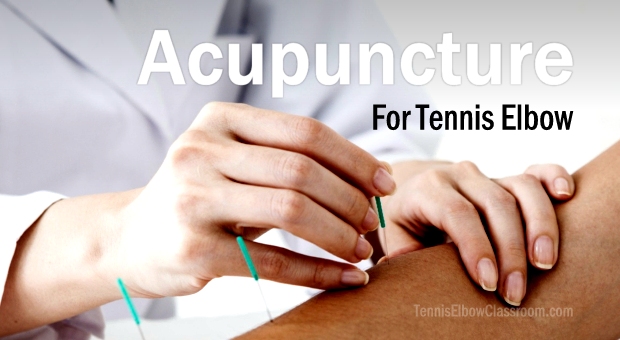
90,000 What is tennis elbow and golfer’s elbow?
What is tennis elbow and golfer’s elbow
Tennis elbow is the common name for lateral (external) epicondylitis, i.e. inflammation of the tendons located on the outer surface of the elbow joint. If epicondylitis occurs on the inner surface of the elbow joint, it is called a golfer’s elbow. The tennis elbow is more common than the golfer’s elbow.
Tennis elbow and golfer’s elbow are not the typical inflammation that was previously thought. Rather, it is a local painful irritation of the site of attachment of the tendon to the bone.
Two types of epicondylitis
Golfer’s elbow (pain on the inner surface)
Tennis elbow (outer pain)
Tennis elbow and golfer’s elbow: causes and risk factors
All muscles of the forearm involved in the movement of the fingers and hand are attached to the humerus at two points, the external and internal epicondyle. Overloading these muscles leads to microscopic tears, including in the tendons.
Overloading these muscles leads to microscopic tears, including in the tendons.
Sports loads and prolonged bent position of the elbow joints (even without effort) can cause epicondylitis. In everyday life, epicondylitis can develop in people who work a lot at the computer and when doing manual work with arms bent at the elbows.
Symptoms of epicondylitis
Pain in the elbow joint occurs with muscle tension.With a tennis elbow, pain is localized on the outer surface of the elbow joint, and with a golfer’s elbow – on the inside.
The greater the effort of the muscles of the forearm, the more intense the pain. The pain can spread to the shoulder and forearm. In addition, there may be complaints about the appearance of weakness of the fingers.
Initially, pain occurs only during muscle contraction (clenching a fist, gripping with a hand, lifting weights, etc.). As the disease progresses, pain is felt at rest.
Prevention of epicondylitis
Observe the correct biomechanics of movements in the elbow joint:
- Play tennis with correct technique.If necessary, attend a special briefing.
- Use the ergonomic mouse and keyboard while working at the computer to relieve tension on the muscles in your forearm.

- If you are doing manual work, use the cordless tool.
- When lifting heavy objects, keep your palms facing up.
- Dose exercise and take regular breaks.
Treatment of epicondylitis
First, it is necessary to change the biomechanics of the elbow joint, as during sports or work, to eliminate the cause of the pain.In this case, therapeutic measures will quickly help get rid of the pain.
- Bandages. To relieve the condition, many doctors first recommend the use of elbow braces. Compression knit and 3D silicone inserts work effectively on muscles and tendons to reduce pain.
- Bandages. medi has developed the medi Epibrace special dressing for the treatment of epicondylitis. The dressing has a special insert that reduces tendon tension and smooths out peak loads.

- Surgical treatment. For the treatment of epicondylitis, surgical treatment is used extremely rarely, since conservative therapy is effective in most cases.
- Stretching exercises. Performing eccentric exercises (flexion, wrist stretching and forearm stretching) provides significant relief and recovery for many patients. Regular stretching exercises reduce the tension on the tendons.
- Strength training exercises. Strength training complexes help cure epicondylitis.
- Heat and cold can help in the treatment of epicondylitis. In the acute phase and immediately after intense exertion, cooling compresses should be applied. Exposure to heat helps in the treatment of chronic epicondylitis.
- Massage. Special massage (deep kneading), as physiotherapy methods, stimulates blood circulation.
- Shockwave therapy. If epicondylitis is difficult to treat or calcifications are found in the tendons, extracorporeal shock wave therapy may be used.
 Its use helps to start the repair processes inside the tendon.
Its use helps to start the repair processes inside the tendon. - Acupuncture sessions, injection blocks, and pain relievers may also be effective.
Complex of exercises for epicondylitis
For medial (golfer’s elbow) or lateral (tennis elbow) epicondylitis, both eccentric exercises and strength training exercises are effective.For the greatest effect, exercise should be done 3-4 times a week.
Be sure to ask your doctor if this particular set of exercises is right for you.
Tennis Elbow Exercises
Tennis Elbow: Strength Training
Equipment
- not required
- Exercise seated
Home position
- Sit in a chair next to the table.

- Place the forearm of the affected hand on the table surface so that the hand can be flexed and extended freely.
- The back of the hand should be on top.
- Make a fist.
- Extend the clenched hand as much as possible.
- Place your healthy hand on the back of your fist.
- With your good hand, apply moderate pressure to the back of a fist.
- Slowly (like in slow motion) give in to the force and bend your fist.
- Mild pain is permissible at the time of exercise.
- The pressure must be metered so that the trained arm can bend slowly.
- Movement must be slow and controlled.
Frequency
- 3 sets of 15 reps
- break between sets 30 seconds
Tennis Elbow: Stretching
Equipment
- not required
- Exercise seated
Home position
- Stand up straight and extend the affected arm straight out in front of you.

- The angle between the arm and the torso should be 90 degrees.
- The arm should be extended (straightened).
- The back of the hand should be on top.
- Make a fist.
- Place your free hand in your fist.
Exercise
- Bend the affected arm at the wrist joint as much as possible.
- Apply moderate pressure with your good hand to create a tension sensation in the extensor muscles of the forearm.
- To enhance the stretching effect, you can slightly rotate the affected arm outward.
Frequency
- 3 sets for each arm, 20 seconds
- 30 second break between sets
Golfer Elbow Exercises
Golfer’s Elbow: Strength Training
Equipment
- not required
- Exercise seated
Home position
- Sit in a chair next to the table.

- Place the forearm of the affected hand on the table surface so that the hand can be flexed and extended freely.
- The palm must be facing up.
- Bend the hand in a fist as much as possible.
- Place the palm of the healthy hand on the palm of the affected hand.
Exercise
- With your healthy hand, apply moderate pressure to the palm of your affected hand.
- Slowly (like in slow motion), unbend the palm of your injured hand.
Note:
- Fingers and palm should always be in the same plane.
- The pressure should be metered so that the hand of the affected hand slowly yields to the force acting on it.
- The healthy hand should cover all the phalanges of the fingers of the other hand.
- Movement must be slow and controlled.
Frequency
- 3 sets of 15 reps
- break between sets 30 seconds
Golfer’s Elbow: Strength Training
Equipment
- not required
- Exercise seated
Home position
- Stand up straight and extend the affected arm straight out in front of you.

- The angle between the arm and the torso should be 90 degrees.
- The arm should be extended (straightened).
- The palm of the hand should be on top.
- Place the palm of the healthy hand on the palm of the affected hand.
- The healthy hand should cover all the phalanges of the fingers of the other hand.
- Extend the affected arm at the wrist joint as far as possible so that the fingertips are pointing forward and downward.
- Apply moderate pressure with your good hand to create a tension sensation in the flexor muscles of the forearm.
- 3 sets of 20 seconds for each arm
- 30 second break between sets
Medi products for the treatment of epicondylitis
medi products shorten the treatment time for epicondylitis
- medi elbow bandages
- medi elbow bandages
Diagnostics and treatment
Causes and symptoms of joint problems
Joint pain
Human body
Ligament damage often occurs during sports.
Tendons and ligaments
90,000 Tennis Elbow and Golfer’s Elbow
These diseases are otherwise called external and internal epicondylitis – chronic diseases of the elbow joint area, which is a degenerative-inflammatory process at the points of attachment of muscle tendons to the epicondyles of the humerus.
As a rule, epicondylitis occurs as a result of chronic microtraumatization of the tendons and their attachment points to the epicondyle of the humerus, but can also result from direct trauma. Histological examination reveals an excessive number of fibroblasts, insufficiency of microvessels in this area, replacement of normal tissue with scar tissue. Scar tissue is not capable of performing the function of normal tissue, and therefore, symptoms characteristic of epicondylitis appear.
Tennis Elbow
The most common external (lateral) epicondylitis.With this pathology, as a result of microtraumatization, the tendons of the extensor muscles of the wrist (brachioradialis muscle, long and short radial extensors of the wrist) are affected. This disease affects people whose activities are associated with repeated flexion and extension of the forearm at the elbow with a load, for example, tennis players, whence the disease has its second name – tennis elbow.
Disease symptoms
Pain on the outside of the joint, sometimes radiating down the forearm or up the shoulder.
Pain occurs most often during the extension movement in the elbow joint, when lifting a load. As a rule, there is no pain at rest.
Golfer’s Elbow
Internal (medial) epicondylitis occurs as a result of microtraumatization of the tendons of the flexor muscles and muscles that provide rotation of the forearm. This disease is most susceptible to athletes playing golf (which gives the disease its second name – “golfer’s elbow”), table tennis or tennis and people who often have overloaded forearm muscles.
This disease is most susceptible to athletes playing golf (which gives the disease its second name – “golfer’s elbow”), table tennis or tennis and people who often have overloaded forearm muscles.
Disease symptoms
Pain on the inner surface of the elbow. The pain that occurs when the arm is bent at the elbow joint or when the arm rotates around its axis can also occur at rest, spreading to the entire joint.
Diagnostics
A traumatologist can diagnose internal and external epicondylitis during examination. There is rarely a need to prescribe instrumental methods – radiography, ultrasound, magnetic resonance imaging.
Treatment
Unfortunately, conservative treatment of epicondylitis is ineffective. As mentioned above, the disease is associated with chronic trauma to the tendon attachment sites and replacement of normal scar tissue. Therefore, the use of anti-inflammatory drugs is aimed only at the short-term elimination of pain. The use of hormonal drugs is dangerous in that it suppresses the already slowed down regenerative processes, thereby, over time, deteriorating the condition of the tendons and their attachment points.
The use of hormonal drugs is dangerous in that it suppresses the already slowed down regenerative processes, thereby, over time, deteriorating the condition of the tendons and their attachment points.
In the 90s of the last century, a method of shock wave treatment for tennis elbow and golfer’s elbow was developed and successfully introduced in Europe.
The use of a shock wave in the treatment of this pathology made it possible to fight directly with the pathological process itself – with a shock-wave effect, the scar tissue dissolves, new microvessels grow, which leads to the restoration of the normal architecture of the tendon tissue. Thus, the pain syndrome does not just stop, but the cause that caused it disappears.The tendon becomes elastic again, which makes it possible to re-take the usual physical activity, return to sports
Epicondylitis (tennis elbow, golfer’s elbow) – treatment, symptoms, causes, diagnosis
Lateral and medial epicondylitis are similar diseases, localized in the upper extremities.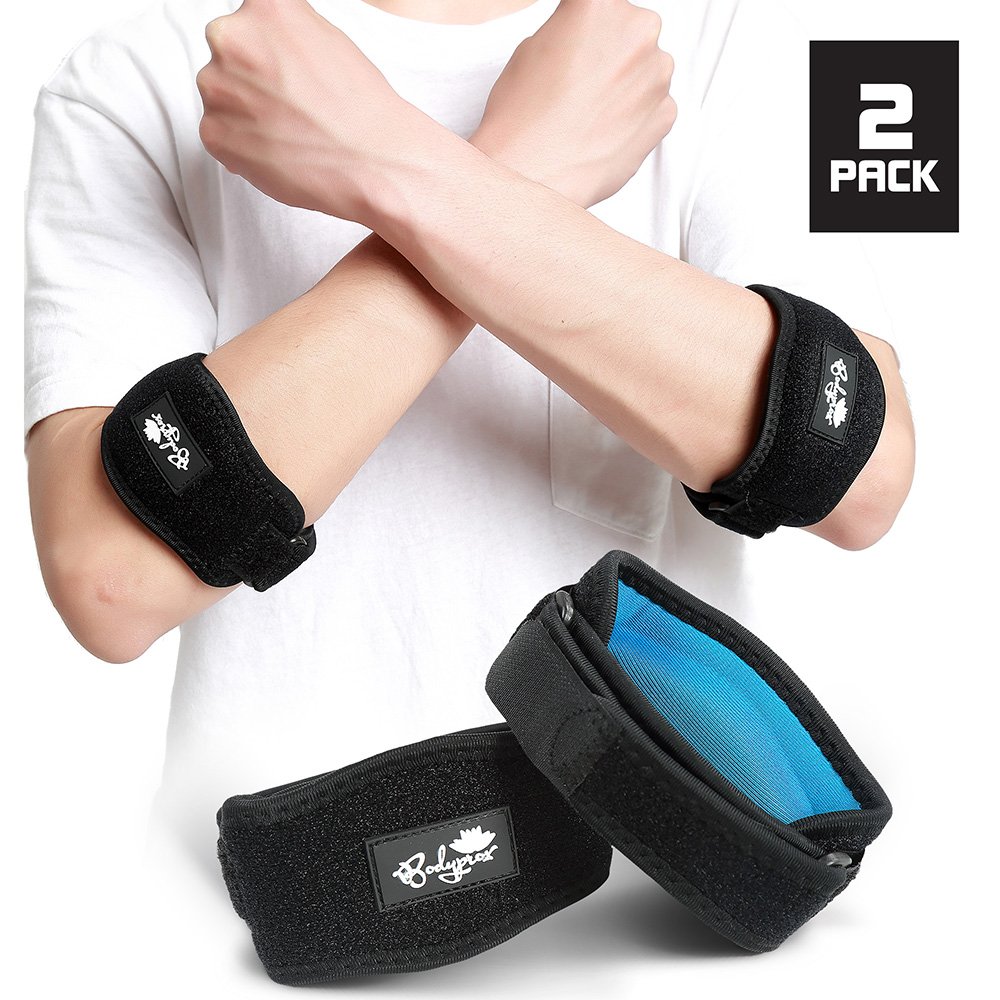 Epicondylitis causes pain and functional impairment and usually results from certain physical activity associated with professional and sports activities. Lateral , originally described by Morris as “tennis elbow” in 1882. Currently, “tennis elbow” can occur in people when performing any activity that is accompanied by repeated flexion and extension of the forearm at the elbow with stress. Medial , commonly referred to as “golfer’s elbow”, can occur in athletes, discus throwers, tennis players, and workers in repetitive occupations (such as carpenters).Lateral epicondylitis occurs 7-10 times more often than medial epicondylitis. Both types (lateral and medial) are most common between the ages of 40 and 50, both in women and men.
Epicondylitis causes pain and functional impairment and usually results from certain physical activity associated with professional and sports activities. Lateral , originally described by Morris as “tennis elbow” in 1882. Currently, “tennis elbow” can occur in people when performing any activity that is accompanied by repeated flexion and extension of the forearm at the elbow with stress. Medial , commonly referred to as “golfer’s elbow”, can occur in athletes, discus throwers, tennis players, and workers in repetitive occupations (such as carpenters).Lateral epicondylitis occurs 7-10 times more often than medial epicondylitis. Both types (lateral and medial) are most common between the ages of 40 and 50, both in women and men.
Lateral epicondylitis is most often the result of repetitive microtrauma, but may result from direct trauma. It is quite common among tennis players, especially non-professionals, in whom the lack of normal technique of movements is a provoking factor.![]() Lateral epicondylitis is caused by repetitive contractions of the extensor muscles of the extensor forearm, especially at the insertion site, resulting in micro-ruptures followed by degeneration, insufficient regeneration, and, as a consequence, tendinosis.The lack of vascularization on the inferior surface of the tendon further contributes to degeneration and tendinosis.
Lateral epicondylitis is caused by repetitive contractions of the extensor muscles of the extensor forearm, especially at the insertion site, resulting in micro-ruptures followed by degeneration, insufficient regeneration, and, as a consequence, tendinosis.The lack of vascularization on the inferior surface of the tendon further contributes to degeneration and tendinosis.
Initially, it is believed that the disease arises from an inflammatory process involving the radial humeral bag, synovium, periosteum and annular ligament. In 1979, Nirschl and Pettrone described their observations as disorganization of the normal architecture of collagen by fibroblasts, which, with insufficient vasculature in this area, cause a process they called angiofibroplastic hyperplasia, later described as “angiofibroplastic tendinosis.”Over time, scar tissue from these processes replaces normal tissue, which further weakens the tissue and puts it at greater risk of damage. The continuation of this cycle of injuries and imperfect regeneration impair biomechanics, disrupt muscle function and lead to symptoms.
Epicondylitis is a degenerative-dystrophic process with the involvement of the extensor tendons in the lateral and the tendons of the flexor-pronator muscle group in the medial. It is believed that systematic stress leads to tendinosis.Microtrauma and partial tears can lead to significant thickening of the tendon. The diagnosis is made on the basis of a thorough history of physical and instrumental examination. In most patients, it is possible to relieve the inflammatory process by prescribing a short course of NSAIDs and using orthoses. Treatments also include injections of autologous blood or platelet-rich plasma, extracorporeal shock wave therapy, iontophoresis, and phonophoresis with drugs that penetrate deep into tissues.
In addition, the rehabilitation program includes measures that contribute to a gradual increase in muscle strength, elasticity and functionality in order to restore the ability to work or the ability to continue playing sports. In rehabilitation, it is important to eliminate any biomechanical disorders that could lead to the initial trauma.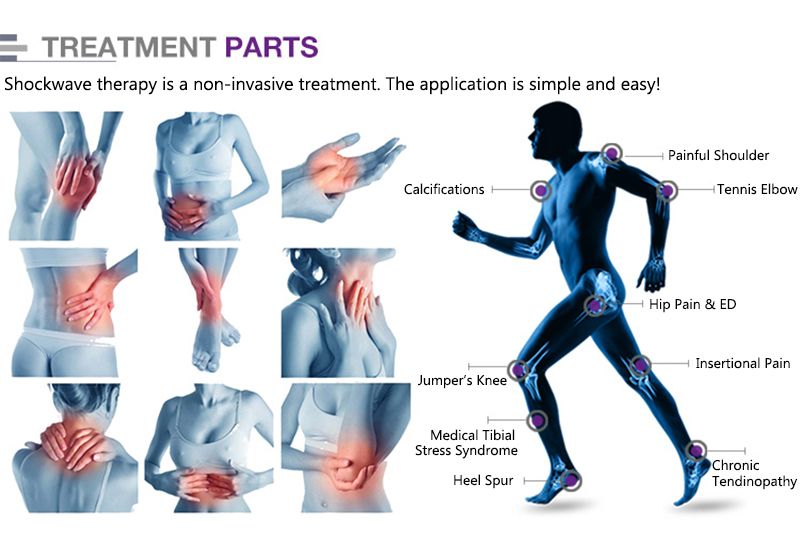
Despite the fact that conservative treatment is often successful, sometimes there is a need for instrumental examination methods, such as MRI or ultrasound.These studies are necessary to verify the presence of calcifications, the degree of tendon damage, the presence of bone growths and when planning surgical treatment. Differential diagnosis is sometimes necessary for lateral epicondylitis with fracture, osteoarthritis, tunnel syndrome. If medial epicondylitis is suspected, medial osteoarthritis, medial ligament injury, and ulnar neuropathy should be ruled out, although these conditions may occur concurrently with epicondylitis.
Symptoms and Diagnosis
Patients with lateral epicondylitis are characterized by the presence of pain in the elbow, which increases when the weight is held in the arm during extension. Playing tennis or similar athletic movements can actually cause epicondylitis, but it is often associated with other activities. On palpation in the area of attachment of the tendons, about 1 cm distal to the middle part of the epicondyle, compaction and soreness are noted.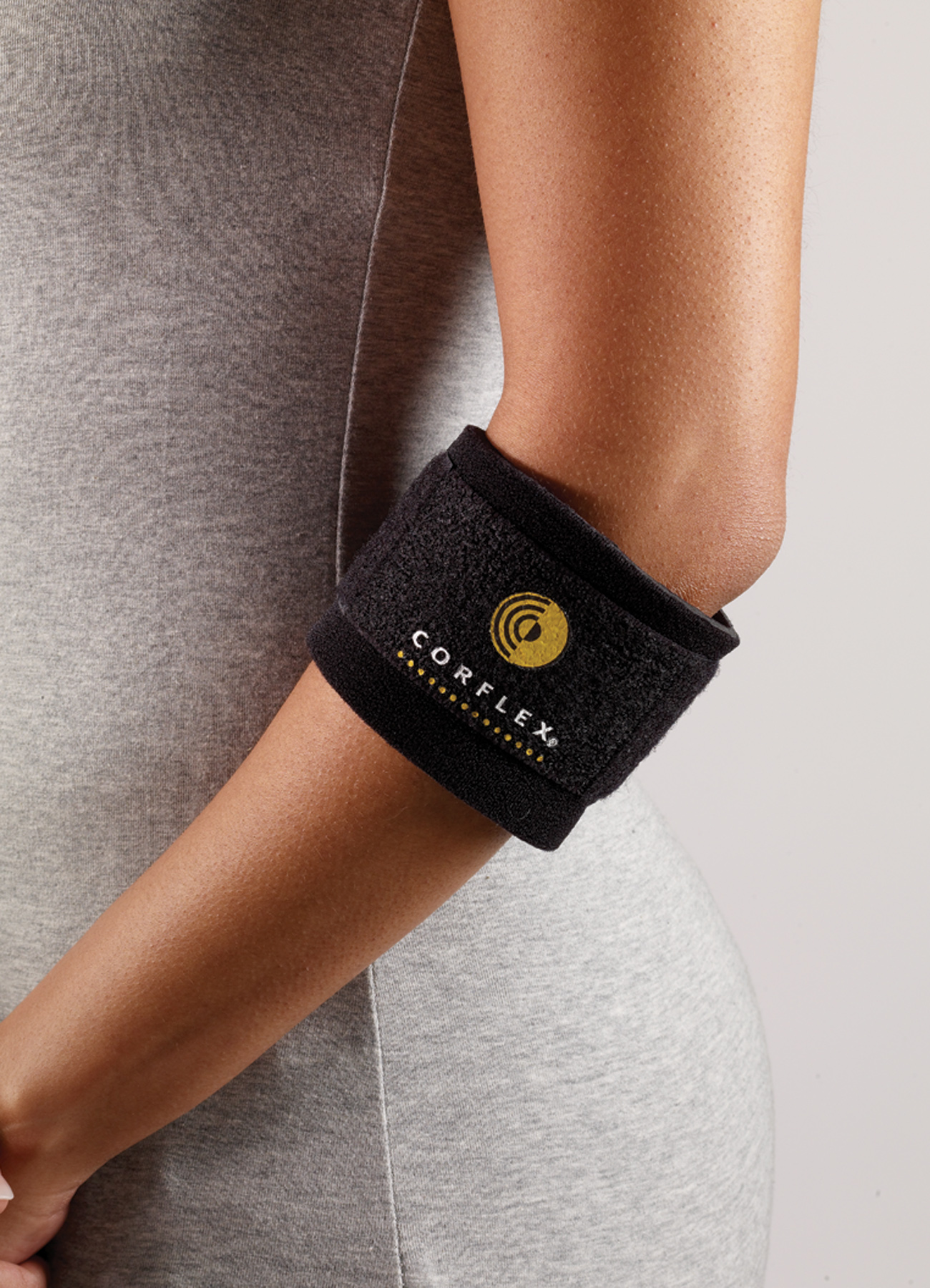 In addition, there is a decrease in muscle strength with resistance to grip and with supination of the hand.There are also tests such as chair lift (with arm pronation) and coffee cup test (in which the patient lifts a full cup of coffee). Elbow pain usually occurs with these tests. The diagnosis of lateral epicondylitis is usually clinical. Epicondylitis can be moderate or severe in degree.
In addition, there is a decrease in muscle strength with resistance to grip and with supination of the hand.There are also tests such as chair lift (with arm pronation) and coffee cup test (in which the patient lifts a full cup of coffee). Elbow pain usually occurs with these tests. The diagnosis of lateral epicondylitis is usually clinical. Epicondylitis can be moderate or severe in degree.
With medial epicondylitis, the pain is localized in the medial part of the elbow. Symptoms (pain) develop gradually in patients with medial epicondylitis (except for acute trauma).Muscle weakness during grasping is also noted. Patients may have a history of golf, basketball, volleyball. On palpation in the area of flexor-pronator tendons (5-10 mm and distal to the middle part of the medial epicondyle), induration and soreness are noted. In addition, the pain is exacerbated by the resistance of the wrist to flexion of the forearm and pronation at a 90 ° angle. Flexion contractures can develop in professional athletes due to muscle hypertrophy. It is necessary to differentiate medial epicondylitis with tunnel syndrome and ulnar neuritis.There is a simple “milking” test (simulated milking), which causes increased pain in medial epicondylitis.
It is necessary to differentiate medial epicondylitis with tunnel syndrome and ulnar neuritis.There is a simple “milking” test (simulated milking), which causes increased pain in medial epicondylitis.
However, sometimes there is a need for instrumental diagnostics (imaging) for differential diagnosis with other diseases. It is noted that 5% of people with a primary diagnosis of lateral epicondylitis have radial tunnel syndrome. Radial tunnel syndrome is compression of the posterior interosseous nerve (deep branch of the radial nerve) in the radial tunnel.Many patients with this syndrome have a history of activity associated with frequent pronation and supination of the forearm. The most common finding on MRI in radial tunnel syndrome is edema, denervation, or atrophy in the muscles innervated by the posterior interosseous nerve.
MRI – diagnostics helps to make an accurate diagnosis. But normal visualization is possible only on high-field devices (magnetic field strength is 1 Tesla or more).
Ultrasound is a rather informative research method that allows visualizing this pathology.
EMG – the study is necessary only for signs of conduction disturbances (with tunnel syndromes and neuritis).
Treatment of epicondylitis
Treatment of epicondylitis is mainly conservative: the use of orthoses during exacerbation and at night, shock wave therapy, ultrasound therapy or galvanization, sometimes local administration of corticosteroids, drug treatment (NSAIDs). In addition, exercise therapy is needed to restore function (a gradual increase in the load on the forearm).Conservative treatments are effective in 90% of cases. In the absence of the effect of conservative treatment within 3-6 months, surgical treatment is recommended.
90,000 Elbow pain, elbow joint treatment in Yekaterinburg, at the medical center
Elbow pain is a serious pathology that can be caused by a number of reasons and significantly impair the patient’s quality of life.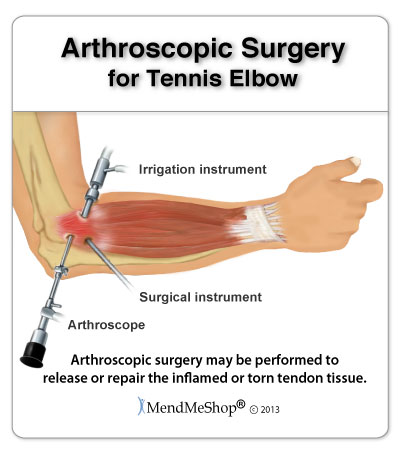 It not only reduces performance, but makes even everyday activities impossible – carrying a bag or bag, drinking tea, due to the fact that it is difficult to hold a mug with a drink.
It not only reduces performance, but makes even everyday activities impossible – carrying a bag or bag, drinking tea, due to the fact that it is difficult to hold a mug with a drink.
What causes elbow pain? Most often, this is shoulder epicondylitis – an occupational disease of tennis players, golfers and all those whose work is associated with increased mobility and load of the arms.
Causes of epicondylitis
From excessive regular overloads in the area of the arms, carrying heavy loads and even just with sudden movements of the hands, a tear of the ligamentous apparatus can occur at the point of attachment to the condyles of the humerus. The consequence of this damage is swelling and inflammation, as well as severe pain in the area of injury.Movement is limited not only in the elbow, but also in the hand and shoulder.
As a rule, the main right hand of many people suffers, but both are susceptible to the disease – and the left, as well.
When you have a sore elbow, you look for options on how to get rid of the discomfort and continue living at a given pace.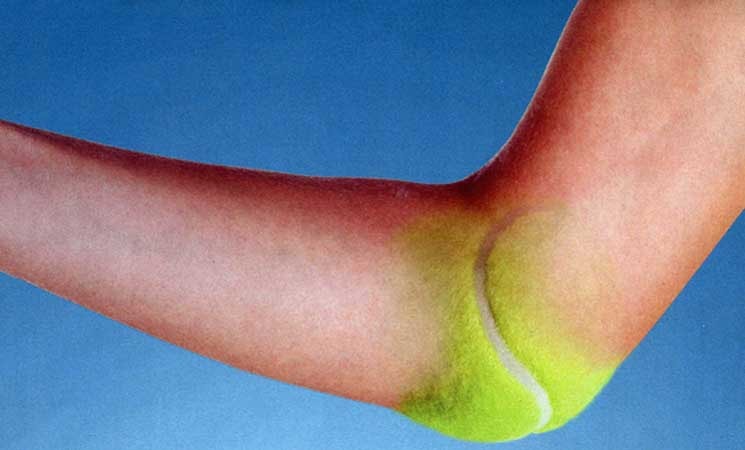 The Spine Team Medical Center will come to your aid quickly and efficiently.
The Spine Team Medical Center will come to your aid quickly and efficiently.
We specialize in problems in the elbow and shoulder joints, successfully relieve osteochondrosis, periarthrosis and other diseases associated with muscles, internal tissues and bones.
We also treat the elbow joint using several types of therapy. Here is a combination of the use of a laser, UHT, and taping. In the balance determined by the doctor, these three types of prescriptions successfully and without a trace fight against epicondylitis. Relieve inflammation and repair tissue.
How to contact
You can treat your elbow in Yekaterinburg at an attractive price at 2 addresses of the Spine Team clinic: at Uralmash on ul. Kirovgradskaya, 20; in the center on the street.Sheinkman, 134A.
We are not a hospital, but a private center, where 4 components of success are concentrated: experienced specialists, the latest equipment, proven methods and treatment regimens, and, of course, the optimal cost of services!
Treatment of epicondylitis of the elbow in Yekaterinburg
Epicondylitis of the elbow is a disease that can occur in people at any age, but usually over 35 years old. It is characterized by the presence of degenerative changes, inflammation, sprains in the muscles and tendons of the forearm.Epicondylitis occurs where muscles attach to the epicondyle of the humerus.
It is characterized by the presence of degenerative changes, inflammation, sprains in the muscles and tendons of the forearm.Epicondylitis occurs where muscles attach to the epicondyle of the humerus.
Epicondylitis of both the right and left elbows may occur, the “leading” arm usually suffers. Some people tend to endure pain and postpone a visit to a doctor at a medical center, examination, consultation and appointment, so the disease can progress for a long period. This is especially true among athletes.
Types of epicondylitis
Diagnostics in the clinic of Yekaterinburg allows doctors to quickly determine the type of disease.There are lateral (external), medial (internal) epicondylitis, as well as inflammation of the back of the elbow.
Reasons for the appearance of epicondylitis
In order to prescribe the appropriate treatment, it is necessary to identify the reasons for the occurrence of epicondylitis:
- Constant tension in the tissue during long-term loads on the forearm, in particular, with constant flexion-extension and rotation, usually tennis players constantly perform such actions ;
- Significant loads on the muscles and tendons of the forearm with regular weight lifting, working with tools;
- performing repetitive monotonous movements with prolonged muscle tension;
- single overstrain of a muscle group;
- received injuries to the elbow;
- Incorrect hand position when working at the table, working at the computer and others.

There are a number of diseases that contribute to the occurrence of epicondylitis of the elbow joint, for example, osteoporosis, neuropathy of the ulnar nerve, arthrosis, dysplasia, periarthritis, osteochondrosis and others.
Main symptoms
In the early stages of disease progression, symptoms may not be visible. But, according to ICD 10, begin to appear:
- periodic pain over the outer shoulder of the shoulder;
- Increasing pain with wrist rotation;
- over time, the pain rotates into a constant, spreading from the elbow to the wrist joint, sometimes even to the hand, middle and ring fingers;
- tingling sensation in the injured arm;
- numbness, “goose bumps”;
- impaired functioning of the limb.
Usually, due to inflammation in the tissues, the patient cannot even hold light objects in his hand.
Methods of treatment
Treatment of epicondylitis of the elbow joint must be trusted by an orthopedic traumatologist. Since the treatment is quite conservative, you can try to cure the disease yourself with the use of regular massages, physiotherapy, taping for epicondylitis. Only a doctor will be able to treat a patient really effectively with such methods:
Since the treatment is quite conservative, you can try to cure the disease yourself with the use of regular massages, physiotherapy, taping for epicondylitis. Only a doctor will be able to treat a patient really effectively with such methods:
- with external use of anti-inflammatory drugs;
- for severe pain, injections and blockade in the form of corticosteroid hormones with anesthetics;
- for subacute epicondylitis, extracorporeal shock wave therapy;
- application of an immobilizing bandage to ensure rest, elbow bandage is suitable for epicondylitis, orthosis.
Therapy should include ensuring rest of the limb and minimizing stress on the arm with a gradual increase.
How is elbow block applied?
There are many reasons for pain in the elbow joint: it is damaged due to injuries and sports, complications may begin due to common diseases, for example, arthritis or osteochondrosis. An elbow block can help relieve the worst of pain episodes and avoid complications.
What is a curative blockade?
This is the name of the method of joint treatment, in which the medicine is injected directly into the diseased areas.The doctor can inject into different parts of the affected joint, into the surrounding muscles and even bone tissue. It depends on the location of the primary damage.
The position of the hand during injection (1), as well as the types of access to the elbow joint: posterior (2) and lateral (3)
Blockade is a new method of treatment that is easier to tolerate than surgery and is more effective than ointments and medications for oral administration. It is used for two purposes:
- reduction of pain syndrome,
- therapeutic effect on the damaged area.
Thanks to this method, the maximum concentration of active substances enters the sore joint, which gives the fastest result.
When elbow block is applied
The blockade can be used to relieve elbow pain in a variety of cases:
- Elbow joint injuries: dislocations, fractures, dislocation of bones, severe sprains or ruptures of muscles and tendons;
- Joint destruction due to high stress: epicondylitis (“tennis syndrome”) and tendonitis;
- Inflammation of the elbow joint, synovitis and bursitis;
- Osteoarthritis and arthritis of various types.

But if the pain in the elbow is caused by diseases of the spine, then the introduction of a blockade in the elbow joint will only help temporarily relieve the pain. Therefore, before prescribing the procedure, the doctor must definitely find out the cause of the pain and conduct an examination. It may include:
- general blood test – it will give basic information about the current state of the body;
- analysis of synovial fluid – its result will tell you more about the pathological process in the joint;
- X-ray of the joint – to detect diseases of the bone tissue;
- Computed or magnetic resonance imaging of the elbow joint – the best examinations to determine the condition of the joints and surrounding soft tissues.
Only after a complete examination and diagnosis, a specialist can prescribe the introduction of a blockade into the elbow joint. This is caused, among other things, by the need to choose a medicine suitable for the disease. However, in case of unbearable pain, blockade with anesthesia can be applied without additional examinations. This will ease the symptoms and restore the joint’s performance.
However, in case of unbearable pain, blockade with anesthesia can be applied without additional examinations. This will ease the symptoms and restore the joint’s performance.
How does therapeutic joint blockade work?
In case of elbow blockade, the medicine enters directly into the damaged joint, which allows it to instantly affect the body.That is why it is often prescribed in cases where traditional methods of treatment have not yielded results.
Depending on the injection site, the elbow block is divided into:
- Periarticular: the drug is injected into the soft tissues surrounding the joint;
- Intra-articular;
- Intraosseous.
Anesthetics and anti-inflammatory drugs of various nature can be used for blockade – it all depends on the damage and the cause of the pain.
According to the composition, the blockade is divided into two groups: one-component and multicomponent.If the first includes either only anesthetic, or only anti-inflammatory, then the second will help both get rid of inflammation and reduce pain.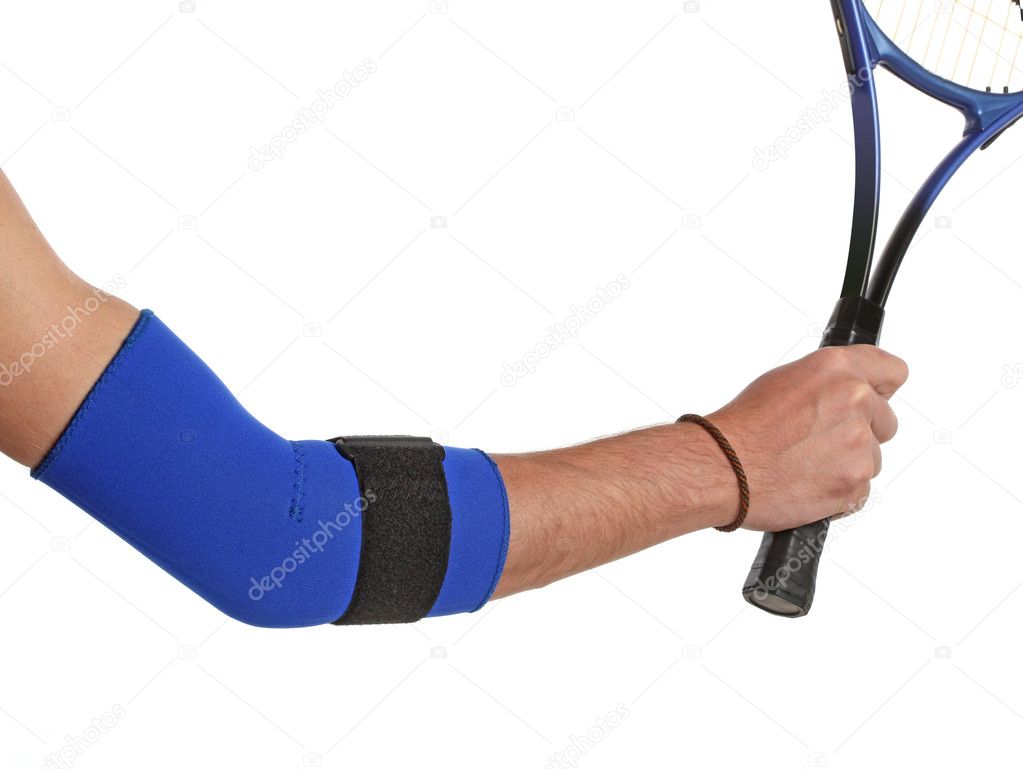
Discomfort during the blockade goes away almost instantly, a few seconds after the injection of the anesthetic. For acute pain relief (for example, after an elbow fracture or tendon rupture), the block is given once. For the treatment of arthrosis, arthritis, osteochondrosis, the doctor may prescribe a course of several injections.
Despite the almost complete working capacity and mobility, try to carefully handle the sore joint after the blockade.This is especially difficult if the dominant arm has been injured. But excessive stress will lead to further destruction of the joint. And this can already cause new bouts of pain, and serious complications with a lower chance of recovery.
Contraindications and complications
Despite the seeming simplicity of the procedure, it has a number of contraindications:
- deformity of the elbow joint due to stage 4 osteoarthritis;
- meningitis, encephalitis and other diseases of the central nervous system;
- blood clotting disorders;
- acute infectious diseases;
- high blood alcohol concentration;
- damage to the joint: wounds, cuts, abrasions;
- children under 12 years of age.

Relative contraindications – diseases of the gastrointestinal tract. This is due to the fact that glucocorticosteroid hormones used in anti-inflammatory drugs disrupt the functioning of the stomach, intestines and kidneys.
Complications due to blockade are rare. These are mainly allergic reactions to the drug: rash, redness, in extremely rare cases – anaphylactic shock and Quincke’s edema. In some patients, hematomas appear at the injection site. Also, an infection can penetrate inside, due to which a more serious inflammatory process will begin.However, both pathogenic bacteria and mechanical damage to the joint after blockade are very rare. Toxic complications may occur due to an incorrectly calculated dose of the drug or its entry into the lumen of the vessels. To avoid this, consult an experienced doctor who will definitely inject correctly.
Despite all possible complications and contraindications, therapeutic blockade is one of the best means for stopping inflammatory processes in the elbow and any other joint.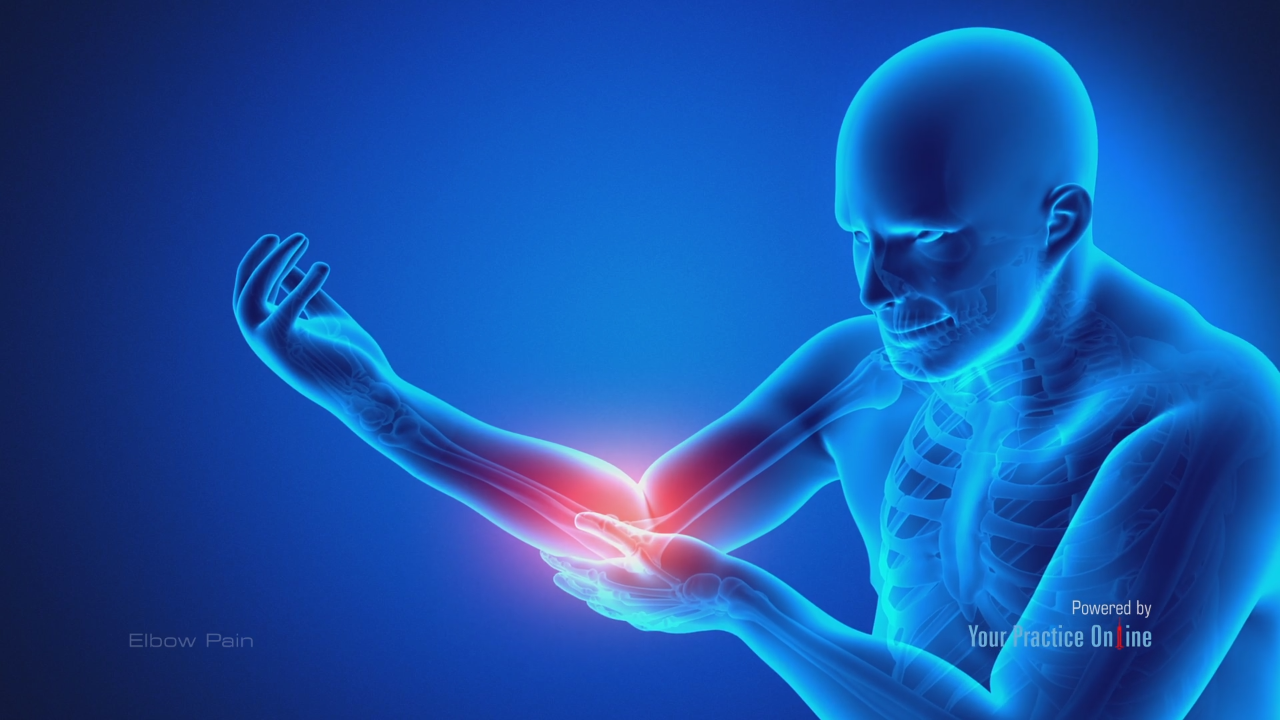 For successful treatment, you need to make sure that the diagnosis is correct and there are no contraindications, as well as contact an experienced specialist. A competently performed procedure can both relieve you of pain and speed up the process of joint recovery.
For successful treatment, you need to make sure that the diagnosis is correct and there are no contraindications, as well as contact an experienced specialist. A competently performed procedure can both relieve you of pain and speed up the process of joint recovery.
90,000 Elbow pain
Elbow pain: the main causes of the development of pathology
Elbow pain can occur for a variety of reasons, ranging from damage to cartilage tissue and ending with damage to the neurovascular system due to injury.If the elbow hurts, then there is no need to wait for self-healing – the specialists of the clinic will determine the cause of the development of the pathology, prescribe an adequate course of therapy.
Sources of pain syndrome development
Elbow pain is formed due to various reasons. Only a diagnostic examination can identify the source of the disease.
- Arthritis – the inflammatory process begins to manifest itself as external discomfort.
 With further progression, the disease captures the entire articulation, the soreness increases with straightening the limb.Further stages of the disease are characterized by: swelling of tissues near the site of the lesion, a stiff joint, non-standard crunching when moving a limb.
With further progression, the disease captures the entire articulation, the soreness increases with straightening the limb.Further stages of the disease are characterized by: swelling of tissues near the site of the lesion, a stiff joint, non-standard crunching when moving a limb. - Osteoarthritis – the elbow begins to hurt when the cartilage tissue is damaged, increased discomfort is observed at the time of flexion and extension. With the development of pathology, there is a decrease in the amplitude of movements, a side crunch.
- Injury – occurs during unsuccessful falls, road accidents, sports training. They can lead to dislocations, bruises or sprains of the ligamentous-muscular apparatus.
- Medial epicondylitis – manifested by pain on the inside of the elbow. It is provoked by tendon wear, excessive stress on the muscle-tendon tissues of the forearm, and injuries.
- Bursitis – formed after an infectious pathology or prolonged compression. It is determined by pain in the posterior part of the joint, causing local tissue edema and joint stiffness.

- Protrusion, intervertebral hernia of the cervical spine – when a pathology appears, the patient suffers from headaches, discomfort in the neck, loss of sensitivity, tingling in the upper limb, from the shoulder to the fingertips.
- Tunnel elbow syndrome – is formed when a nerve is irritated or injured. Elbow pain is accompanied by discomfort along the entire length of the arm, loss of sensitivity in the fourth and fifth fingers or the entire hand.
- Tendinitis – inflammation in tendon and fibrous tissues provoke joint stiffness.
- Tears and sprains of the ligamentous-muscular apparatus – are formed after injury or constant excessive stress. Symptoms of the disease are manifested by joint instability, inflammation, limited range of motion of the elbow joint.
- Osteoarthritis – refers to a common form of arthritis, manifested by inflammation in the cartilage tissue located on the surface of the articulation. The disease often affects the area of the hand, knees, thighs, spinal column, elbows.

- Osteochondritis dissecans – destruction of bone tissue located under cartilage occurs due to weak or absent blood circulation. It occurs in childhood and adolescence.
- Rheumatoid arthritis – refers to chronic autoimmune pathologies that affects the small joints of the upper and lower extremities.The inflammatory process leads to deformational changes in the joints, erosion of bone tissue.
The elbow can also hurt due to sports. Pathology is found in tennis players, golfers, pitchers.
Visit to the medical center
Contacting the clinic will allow you to get rid of pain in the elbow area in a short time, get a full consultation from a specialist. If there are restrictions in free hand movements, tissue edema, an increase in local temperature and extraneous crunch in the joint, the patient should undergo a diagnostic examination.It just can’t hurt in the elbow area – even minor injuries can cause serious complications.
Sign up by phone now!
+7 (473) 210-03-21
Online registration!
Online booking
.

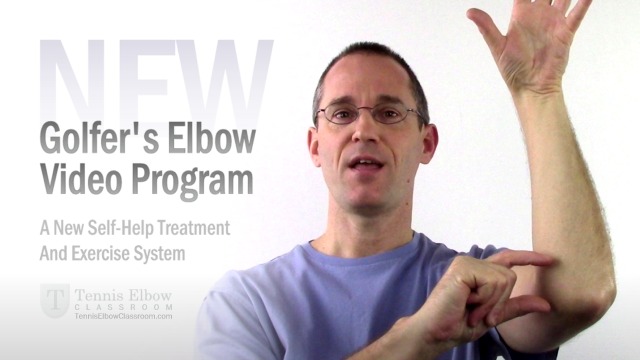 This is given through injections administered directly into the affected area. Results can last several weeks or months, depending on the severity of your condition.
This is given through injections administered directly into the affected area. Results can last several weeks or months, depending on the severity of your condition.
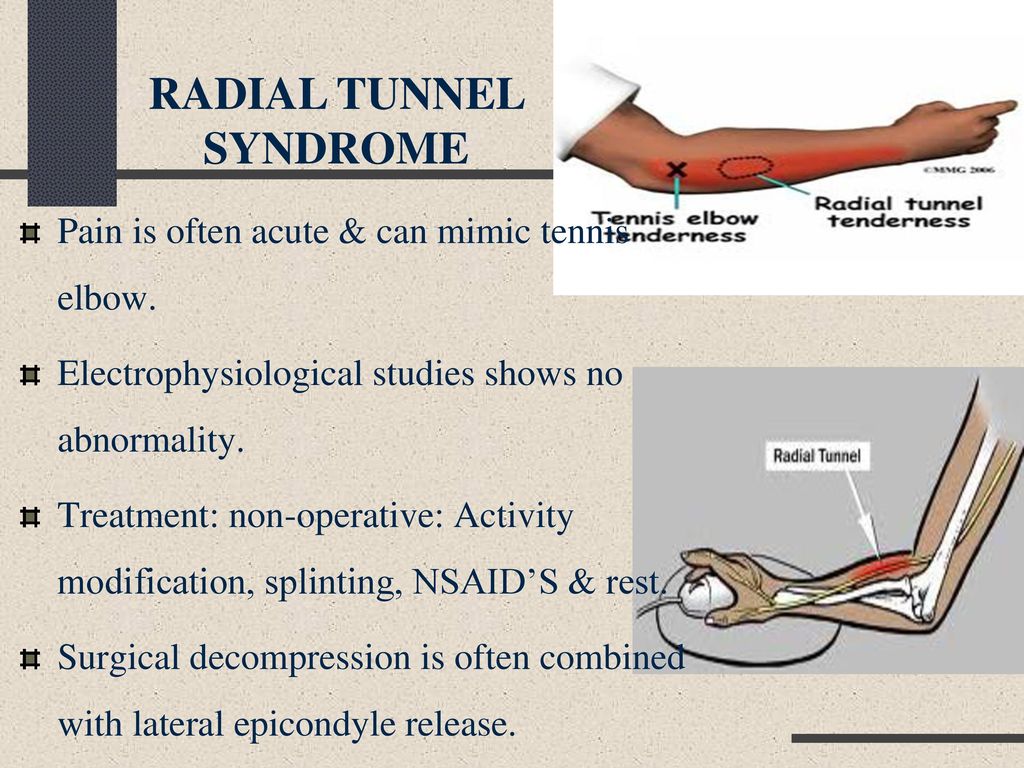



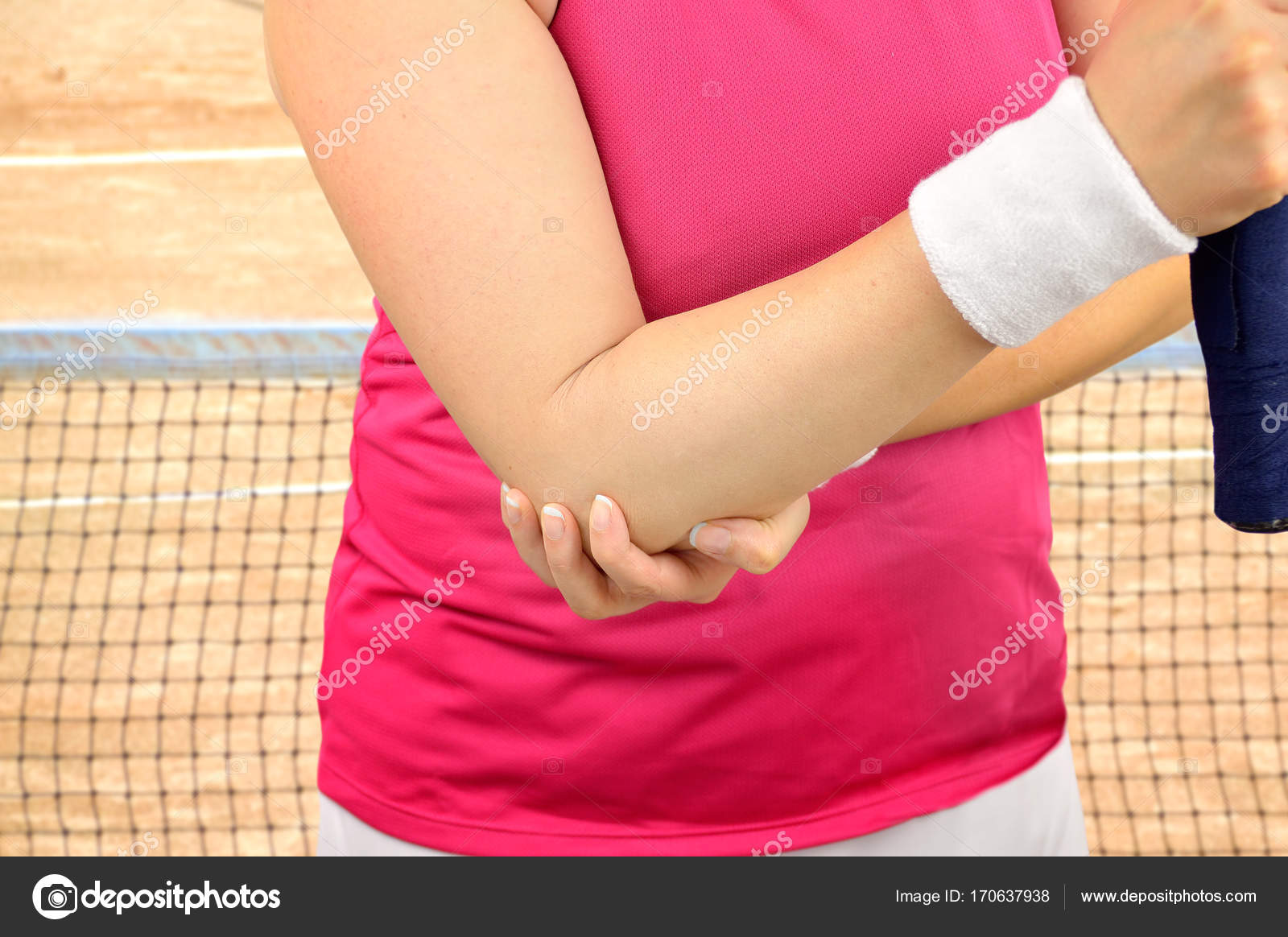

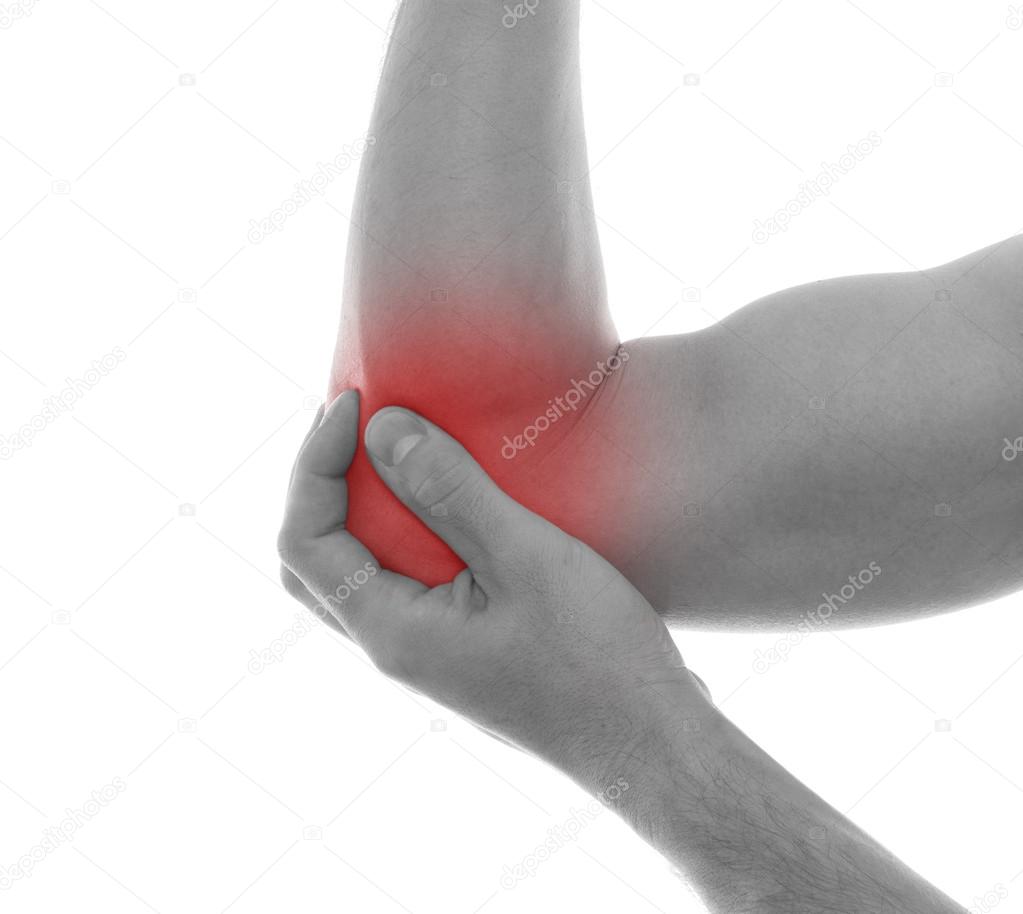 Its use helps to start the repair processes inside the tendon.
Its use helps to start the repair processes inside the tendon.


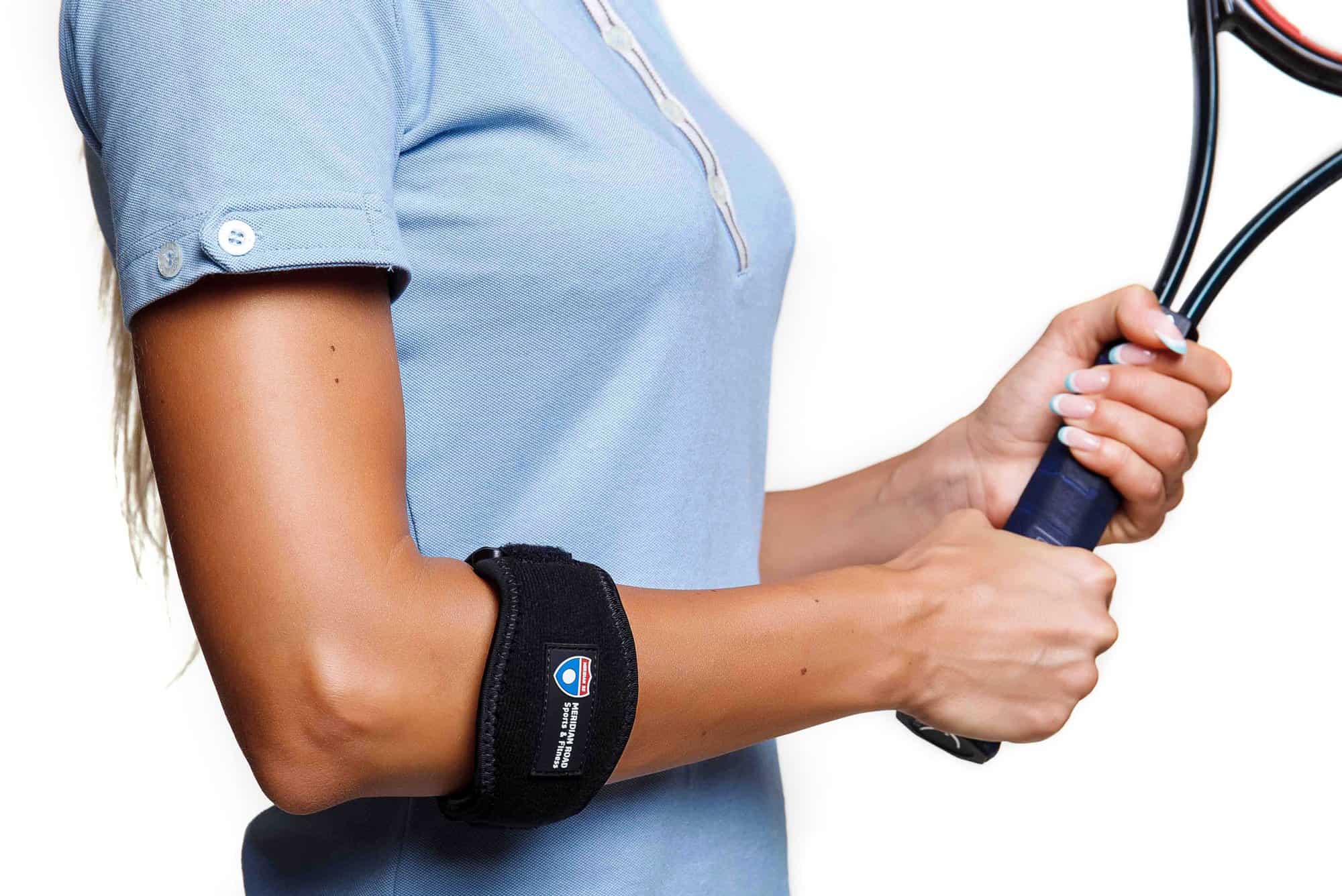


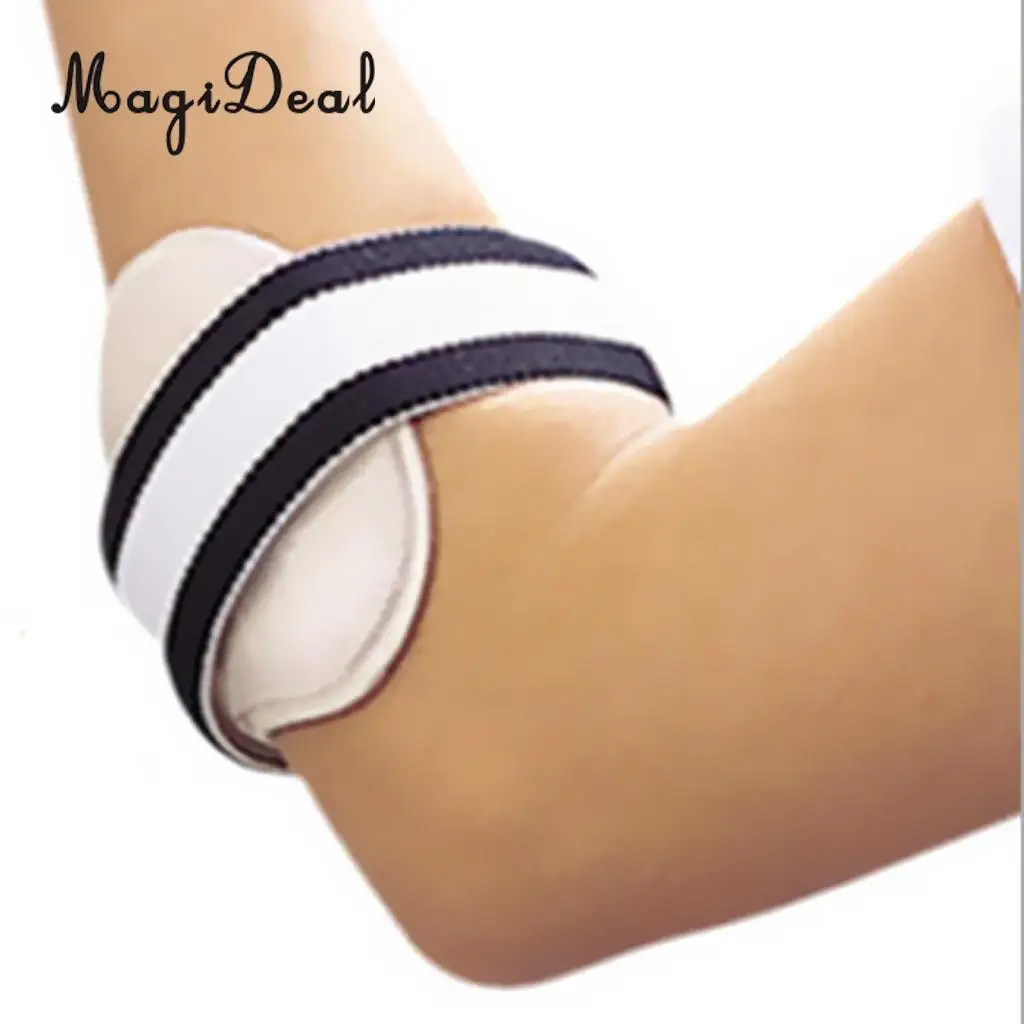 With further progression, the disease captures the entire articulation, the soreness increases with straightening the limb.Further stages of the disease are characterized by: swelling of tissues near the site of the lesion, a stiff joint, non-standard crunching when moving a limb.
With further progression, the disease captures the entire articulation, the soreness increases with straightening the limb.Further stages of the disease are characterized by: swelling of tissues near the site of the lesion, a stiff joint, non-standard crunching when moving a limb.
